Crothall to open new facility in California
WAYNE, Pa. — Crothall Laundry Services plans to open a new commercial laundry facility in Gilroy, Calif., to serve healthcare organizations in the Bay Area region of Northern California, the company reports.



Crothall says it plans to hire 50 people to start for various positions and is scheduled to open the new facility on Jan. 15, 2018.
Crothall will take over a 102,000-square-foot commercial laundry facility that will have stateof-the-art laundry equipment and has the potential of being their largest laundry operation in California, the company says. Initially, the plant will process 16 million pounds of laundry, but has the capacity to process much more at full volume.
“Our new laundry facility in Gilroy is strategically located to easily reach healthcare facilities in San Francisco, San Jose and the entire Bay area,” says Jaime Brockamp, vice president of operations for Crothall Laundry’s West division.
Western State Design, based in Hayward, Calif., is the general contractor for the project. ALN

Louisiana operation loves dirty hospitality laundry
BY MATT POE, EDITOR
SLIDELL, La. — Dirty Laundry Linen Service is an appropriate name for a commercial laundry operation.
The local company processes goods for the hospitality industry and focuses on table linens and specialty items, says Jared Johnson, its president and CEO.
While today the laundry is a growing commercial operation, the story of its beginnings starts with an entrepreneur’s purchase of a coin laundry after Hurricane Katrina. And therein lies a tale.
BEGINNINGS
Len Bazile Jr. started Dirty Laundry Linen
Service as another in a long line of entrepreneurial enterprises.

“Bazile has been a serial entrepreneur since he was 19 years old,” says Johnson. “He started several businesses, including restaurants, bars, catering, real estate rentals and an office supply business, to name a few.”
Throughout those early years as he started businesses, Bazile used a coin-op laundry to wash his clothes. In August 2006, after Hurricane Katrina, Bazile decided to buy his own coin laundry, Johnson says.
Bazile saw a golden opportunity in the coin laundry market after Katrina with the influx of contractors and transient workers
See DIRTY on Page 6
Laundry today, tomorrow: It’s all about the data
BY MATT POE, EDITOR
CHICAGO — Vinnie Samuel is an engineer at heart.
In fact, he has a master’s degree in electrical engineering.
Today, he is co-owner and president of JVK Operations, a commercial laundry and linen service with plants in New York and New Jersey. While his business is laundry, he still looks at operations through the eyes of an engineer.
And that means he wants data.
So, it’s no surprise that Samuel makes use of laundry information-reporting software to analyze how his plants are performing.
“Let’s say I have a tunnel washer, and it’s supposed to put out 35 loads an hour,” he

says. “I can look at the data, from anywhere in the world, and see that I only got 32 loads this hour. I can look at the data and see that the tunnel wasn’t operating for five minutes during the hour. Maybe the operator wasn’t
Data is said to be driving the future of the laundry industry. (Image licensed by Ingram Publishing) Volume

paying attention. Or, the system can tell me that the water pressure went down. It’s all about the information. The computer tells
Humanitarian Stories
The laundry industry provides more than linen throughout the year. Learn how it gives back.
Panel of Experts
It’s 2018, so that means a brand-new Panel of Experts. Read about them and their expertise.
Healthcare Linen Hoarding
FInd out how to counter one of the nagging challenges of healthcare laundry—hoarding.
JA NU ARY 2018
Late News
www.americanlaundrynews.com INSIDE [10]
The Newspaper of Record for Laundry & Linen Management
[22] See DATA on Page 6
[14]
Experts say information driving performance, service
Dirty Laundry Linen Service went from washing table linens in coin-op machines after Hurricane Katrina to become a commercial enterprise
The Dirty Laundry Linen Service plant utilizes washers ranging in capacity from 50 to 250 pounds. (Photo: Dirty Laundry Linen Service)
44, Number 1
Your Views Survey:
Pounds processed in 2017 increased over 2016
CHICAGO — In the laundry and linen services industry, one of the key markers related to productivity is pounds of linen processed.
The industry saw an increase in pounds processed in 2017 over 2016. That’s what respondents indicated in a recent Your Views survey conducted by American Laundry News
So, how good was 2017 in terms of pounds processed? Almost 90% of managers who took the survey say they processed more linens, in terms of poundage, in 2017 compared to 2016.
Nearly 70% of respondents indicate that pounds processed at their plants in 2017 was “somewhat higher” than was processed in 2016, while 20% say it was “much higher.”
As expected, there was a wide range of answers to the question, “What will be your total estimated poundage for 2017?”
Most respondents answered in millions of pounds, the lowest being 4.5 million pounds and the highest being 200 million pounds.
“We are kind of like a franchise model,” writes a respondent. “We have 36 affiliated laundry facilities in 22 states. Overall, volume has increased approximately 15% to 200 million annual pounds.”
Smaller operations ranged from 312,000 to 750,000 pounds processed in 2017.
When asked to provide an approximate percentage of increase or decrease of 2017 poundage compared to 2016, the average increase was around 11%. The average decrease was about 4%.
It should be noted that managers reporting an increase for the survey far outnumbered those reporting decreases.
No plant reported that its pounds processed remained static in 2017 compared to 2016.
How did the plants reporting an increase in pounds processed make it happen? The overwhelming response was more business, and this business came either by adding more accounts or increased institutional business.
“Customer increases in patient days resulted in more linen being utilized,” writes a respondent. “Also, our equipment improvements resulted in better productivity.”
Improved marketing ideas and management input was also said to have helped plants increase business.
“We opened another plant,” another survey taker writes. So, what happened with the plants that saw a decrease in pounds processed in 2017, not meeting goals and expectations? Two major factors were cited by laundry managers who took the survey. The first, which can be difficult for a plant to counter, was “slowing or loss of business.”
However, the second major factor for not meeting expectations that lands directly in the plant was “productivity of employees.”
“We need better service,” a respondent writes.
After those two factors, respondents pointed to the “capabilities of equipment” and “marketing efforts” as factors leading to decreased

pounds processed.
Looking ahead to 2018, survey respondents expect the pounds of linens processed by their plants to either increase or remain the same.
Nearly 87% expect 2018 poundage to be “somewhat higher than 2017.” The remaining 13% expect to process “virtually the same amount.”
How do plants plan to make 2018 a better year in terms of poundage? For most laundry managers who took the survey, it comes down to getting more business.

“We first need to get more customers, increase route customers from different areas,” writes a respondent.
Another writes, “Extra marketing with improved processes during the slow time, January and February.”
“Increased new sales and more efficient equipment,” adds another.
Equipment and capacity improvements were also noted by several other respondents in terms of increasing pounds processed.
“As a co-op, most of our growth is organic,” one survey taker writes. “We just added more ironer and folding equipment and have purchased more washroom equipment to be installed early 2018.”
“We continue to upgrade equipment, expanding to match our geographical market base potential,” adds another.
While the Your Views survey presents a snapshot of readers’ viewpoints at a particular moment, it should not be considered scientific. Due to rounding, percentages may not add up to 100%.
Subscribers to American Laundry News e-mails are invited to take the industry survey anonymously online each quarter. All managers and administrators of institutional/OPL, cooperative, commercial and industrial laundries are encouraged to participate, as a greater number of responses will help to better define operator opinions and identify industry trends.
Publisher
Charles Thompson
Phone: 312-361-1680
E-Mail: cthompson@ ATMags.com
Associate Publisher/ National Sales Director





Donald Feinstein
Phone: 312-361-1682
E-Mail: dfeinstein@ ATMags.com
Editorial Director
Bruce Beggs
Phone: 312-361-1683
E-Mail: bbeggs@ ATMags.com
Editor
Matt Poe
Phone: 866-942-5694
E-Mail: mpoe@ ATMags.com
Production Manager Roger Napiwocki
Digital Media Director
Nathan Frerichs
Phone: 312-361-1681
E-Mail: nfrerichs@ ATMags.com
Advisory Board
Jim Buik • Greg Gurtler
Phil Hart • Janice Larson
Tom Marks • Gerard O’Neill Richard Warren
Main Phone: 312-361-1700 Fax: 312-361-1685
Subscriptions
630-739-0900 x100 www.americanlaundrynews.com
American Laundry News (ISSN 1091-9201) is published monthly. Subscription prices, payment in advance: U.S. 1 year $46.00; 2 years $92.00. Foreign, 1 year $109.00; 2 years $218.00. Single copies: U.S. $9.00; Foreign $18.00.
Published by American Trade Magazines LLC, 566 West Lake Street, Suite 420, Chicago, IL 60661. Periodicals postage paid at Chicago, IL, and at additional mailing offices.
POSTMASTER, Send changes of address and form 3579 to American Laundry News Subscription Dept., 440 Quadrangle Drive, Suite E, Bolingbrook, IL 60440. Volume 44, number 1. Editorial, executive and advertising offices are at 566 West Lake Street, Suite 420, Chicago, IL 60661. Charles Thompson, President and Publisher. American Laundry News is distributed selectively to qualified laundry and linen management and distributors in the United States.
© Copyright AMERICAN TRADE MAGAZINES LLC, 2018. Printed in U.S.A. No part of this publication may be transmitted or reproduced in any form, electronic or mechanical, without written permission from the publisher or his representative. American Laundry News does not endorse, recommend or guarantee any article, product, service or information found within.
Opinions expressed are those of the writers and do not necessarily reflect the views of American Laundry News or its staff. While precautions have been taken to ensure the accuracy of the magazine’s contents at time of publication, neither the editors, publishers nor its agents can accept responsibility for damages or injury which may arise therefrom.
2 JANUARY 2018 | AMERICAN LAUNDRY NEWS www.AmericanLaundryNews.com
INSIDE: January 2018 • Vol. 44 | No. 1 [11] Silver Earned for Environmental Responsibility Mission Linen Supply takes silver in 2017 Best in Biz; awards judged by editors, reporters from North American media [12] Resolutions for Better Operations in 2018 In this month’s OPL 101, learn why it pays to take time to create “resolutions” for overall laundry operations [18] Up To Date Laundry Opens New Facility Baltimore-based healthcare laundry expansion to add 72 million pounds of capacity, 400 jobs over five years [25] Career Track [26] Classified Advertising [27] Source Directory [30] Trade Ticker
MEMBERSHIPS
ALN
Milnor has a better solution through dilution.
When Milnor introduced PulseFlow® technology, CBW® washing was thrust into the future. The idea of balancing time, temperature, mechanical action and chemistry was missing one critical piece of the pie – DILUTION through the efficient use of water.
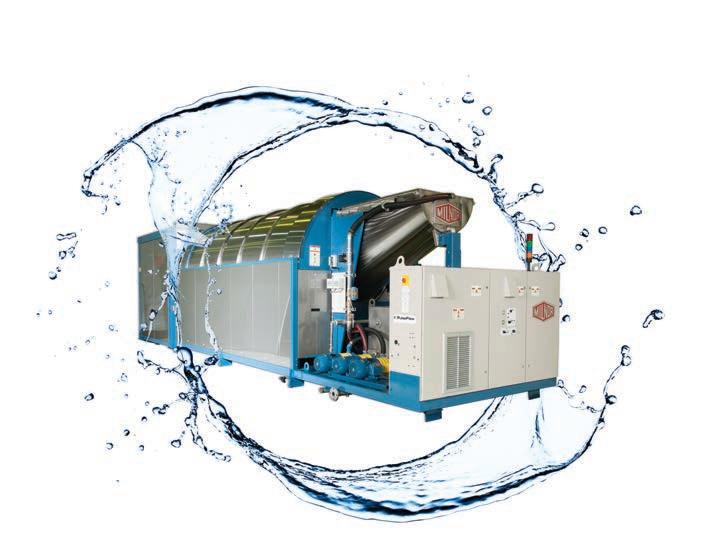
PulseFlow combines the innovative RecircONE® fast wet down and chemical immersion in the first module with standing bath washing in every spacious process module. Thorough and efficient dilution occurs by way of intermittent high velocity counterflow rinsing and traditional True Top Transfer.
The result is hygienically clean linen using less water (as low as 0.3 gallons per pound/2.5 liters per kilogram) and less energy as proven time and again by hundreds of PulseFlow tunnels in a variety of laundry applications worldwide.
Contact an authorized Milnor distributor or call 504-712-7656 to find out more.
www.milnor.com

*PulseFlow®,
and
are Pellerin Milnor’s registered trademarks.
CBW®
RecircONE®
To a kind, successful 2018
As I write this column, it’s the middle of the holiday season.
Many call it the season of giving, and it’s true. During the holidays, people tend to pay more attention and give to those in need.
As I worked on this issue of American Laundry News, I was reminded just how giving this industry is.
During the latter half of 2017, the laundry and linen service industry stepped up to help both individuals and businesses negatively affected by disasters.
Their stories inspired me to do some research into the giving nature of the industry. Both laundry operations and suppliers give back to their communities throughout the year.
It touched my heart to learn how industry players have been
From The Editor’s Desk MATT POE
giving back, from pounding nails for Habitat for Humanity to gathering food, blankets and toys to help animals in local pounds; to read about them helping in the United States and beyond. Turn to page 10 to be inspired by your colleagues in the industry.
The people of Puerto Rico are
still dealing with the effects of Hurricane Maria, and many folks have gone to the island to lend a helping hand. And the U.S. military is helping those responders by washing their clothing with a laundry advance system. You can read the story on page 24.
Yes, it was easy to get caught up in the spirit of giving during the season, but business still has to go on. That’s why we’ve also included articles on laundry data (cover), the value of making resolutions (page 12) and ideas to counter linen hoarding in healthcare.
And don’t forget, it is a new year, and that means meeting a new Panel of Experts (page 14).
I hope business in 2018 is even better than 2017, and that your giving is even greater. Keep it clean, everybody! ALN
Letter to the Editor
Chemicals expert adds further insights to reducing rewash article

Good article on rewash [November 2017, page 20]! I think you hit on about all the considerations. The only things not mentioned is that, yes, rewashing things again is expensive, but so is washing everything at the level it takes to get rewash way down. For instance, if one has to increase the chemicals by 30% on all loads to get rewash from 10% down to 5%, it may be more cost-effective to wash at a 10% rewash level and then wash just that 10% at the heavier level. One has to just do the math.
And, I would have stressed how much working with your chemical rep can help with all these decisions. A good rep (I admit they aren’t all good) can rework formulas and use different chemicals to get a drastically different result.
We’ve had our lab actually change solvents in a detergent just to deal with a particular kitchen oil. When the new “healthier” oils came out, oil stains
blossomed! Weird oil formulations left stains that just didn’t come out with the same chemistry as before. We got samples of various oils themselves and tried different surfactants and solvents with them. Slight changes to detergents made huge differences. What I’m saying is, ask your chemical company to help figure out stains. If your rep doesn’t know how, chances are his company people do. Ask him to take the problem to their lab or a more experienced rep.
I do enjoy your magazine. I get a different perspective by reading how the equipment people and owner/operators respond to problems. It’s easy to get blinders on and only view the industry from one’s own perspective.
David Barbe U.N.X. Inc. Greenville, N.C.
 AT LARGE Eric L. Frederick, RLLD
AT LARGE Eric L. Frederick, RLLD
Attention to detail
T here are two major management skills that all managers need in order to succeed.
The first, which we’ll examine this time, is the ability to organize a laundry into an efficient operation. To excel at this task, a manager must be able to thoroughly understand how each process is interconnected and how changes in one area of the operation will affect other parts of the operation. These changes are seldom obvious but will become obvious over time.
A good example of this type of change is increasing the weight per sling of pillowcases going through the tunnel washer by 10 pounds. The goal is to increase washer productivity, and at first there may be no adjustment made to the wash formula or conditioning time per load. The result of this change will become obvious downstream in the ironing department. It might require more time to iron the pillowcases because of increased moisture retention. There may be more rewash caused by the increased weight, or a bottleneck may form at this point because the staff cannot over time handle the increased hourly output. There may be an interruption in the way orders are filled or the quality of the finished pillowcases.
One small change will require the management team to carefully monitor the effects throughout the laundry. Such constant attention to detail is not normally given by most managers or management staff. They are completely dedicated to achieving the daily task at hand. There are orders to fill, reports to be provided, budget reviews to attend. All more demanding, often considered higherlevel, management functions to be accomplished.
Paying constant attention to the small details will ensure that all the orders, customer service goals, financial goals and personnel management goals are properly met. Failure to do so will result in the need for more and more creative excuses as to why the laundry is having trouble meeting its goals.
In my example, the management team only made one small change. This would seldom be the case. Changes are constantly being made in all phases of the operation. New products are constantly being added, customers added, customers lost, personnel changes because of poor performance, family moves, promotion or retirement. Each change requires additional attention to detail.
This constant attention to detail is why I tried, no matter how busy I was, to walk though my entire operation three times a day and question my management staff as to the reason behind what I was seeing.
Sometimes the pressure of the day caused by staff shortages or linen shortages caused great management people to make dumb decisions. It was my job to show them better alternatives in how to handle the problem. A good manager is always looking for the teaching moment. Running a small-piece ironer with a full staff for two hours and then moving the staff elsewhere is preferable to running a small-piece ironer with less than half its normal staff for four hours.
Attention to every detail is the key to the best operations. How well do you and your management staff pay attention to the details? I am sure we can all benefit from increased effort in this area.
Next month, we will discuss the important management function of being a visionary manager. ALN

Eric Frederick served 44 years in laundry management before retiring and remains active in the industry as a laundry operations consultant. You can contact him by e-mail at elfrederick@cox.net or by phone at 540-520-6288.

4 JANUARY 2018 | AMERICAN LAUNDRY NEWS www.AmericanLaundryNews.com
COLUMNIST
Top Stories Appearing on AmericanLaundryNews.com for the 30 Days Ending December 15 (WE) = WEB EXCLUSIVE NEWS • Hygienically Clean Healthcare Standards Clarified • Fujitsu, Positek Partner to Grow RFID Market in North America • Magnus Textile Donates Nearly 4,000 Towels to Puerto Rico • OSHA Recognizes Cintas Washington Location with ... • HX: The Hotel Experience Under New Ownership COLUMNISTS/FEATURES • The Future of Dispensing Systems • Reusable vs. Disposable Underpads in Healthcare • Looking at Laundry Operations of the Future • Eric Frederick: The Most Valuable Work: Planning • OPL 101: Think Not Much Has Changed in Laundry Operations? ... OUR SISTER WEBSITES From AmericanDrycleaner.com: • Bechtle, CEO of ZIPS, Retires (WE) • Former U.S. Marine Joins Leonard Automatics From AmericanCoinOp.com:
Reaching the Do-It-at-Home Crowd
Customer Crazies: Tales from the Laundromat
•
•
C O NS
AN
A TTEN
TIO N
DE
AI
T
O MA TT
OPERA
“THIS
T
T
-
TO
T
L IS WHY I
RIED, N
ER H OW BUSY I WAS, TO WA LK THO UGH MY EN T IRE
TIO N T HREE T IMES A DAY AND QUES TIO N MY MANAGEMEN T S T AFF AS TO T HE REAS
O N BEHIND WHA T I WAS SEEING.”


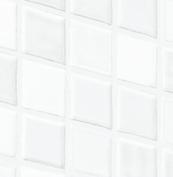



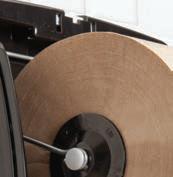





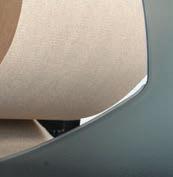
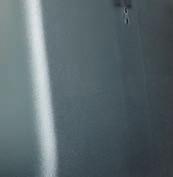










800 821 2221 americandawn.com | imagine@americandawn.com NO MINIMUMS. ADI is proud to announce our new product line of disposable paper products. With a variety of paper options and dispensers, we can help you service all your Customer’s needs. Same Day Shipping. No Minimums. ADI... We ARE the Difference!
moving into New Orleans to help rebuild the city.
“Within a few months of starting the coin-op laundry, a friend of his who invested some seed money in the original purchase of the coin laundry asked him to wash some of the table linens from his catering business,” Johnson says. “And that’s how Dirty Laundry Linen Service was born.”
GROWING PAINS
However, as all entrepreneurs know, not everything goes as planned when starting a business—especially when it comes to laundry and linen services.
By November 2006, Dirty Laundry Linen Service was growing, says Johnson. The company was washing table linens for local catering companies and also renting them aprons and bar mops.
“The bar mop and apron rental business dissolved very quickly, as he was not set up for that type of volume or that type of soiled linen,” he says.
From the beginning, Johnson says the biggest challenge for the company was not having an ironer to press the linens. It also didn’t have the chemical formulas to remove some of the food stains in the table linens.
“At one point, (Bazile) started subbing out some of the stain removal work to a local dry cleaner to help him remove the food oil stains from the linen,” the CEO says. “Along with the help of his staff, he was able to time the linen in the dryers just right so that they came out looking as best as possible.”
It wasn’t until 2015, the year Johnson partnered with Bazile, that the company moved into a larger commercial laundry facility. Then, the operation was able to provide a top-quality product to its customers and, in turn, have the ability to expand the business to serve larger customers as well, Johnson says.
Dirty Laundry Linen Service has maintained relationships with some of the larger laundries in New Orleans, providing those laundries an option for smaller customers that would not be a good fit for their plant, Johnson says.

He says the smaller customers are often ideal for Dirty Laundry’s facility or its smaller processing facility (a coin-op laundry) in nearby Kenner, La. That facility handles smaller customers, like Airbnbs, state parks, and salon and spa operators.
“If we get a phone call from a large customer that we can’t handle or a customer that is looking for linen rentals, we will direct them to the larger laundries,” Johnson says. “Our hope is to make it a win-win for both parties.”
includes a 50-pound UniMac washer, a 60-pound Milnor washer, three 135-pound UniMac washers and a 250-pound UniMac washer.
For dryers, the company has two 70-pound and four 170pound UniMac dryers. It uses G.A. Braun equipment—a two-roll, 32-inch steam ironer and a folder/ stacker—for ironing, folding and stacking.

“Our ironer is powered by two boilers, a 50-horsepower Fulton boiler and a 50-horsepower Bryan boiler,” Johnson says. “We like the peace of mind the two boilers give us, and we alternate running them weekly. We also run a Camus water heater and two Ingersoll Rand air compressors.”
Dirty Laundry Linen Service operates its plant Monday through Friday. Johnson says the washman opens the plant at 4:30 a.m. each day, and the production team arrives at 6:30.
“Currently, we are running a single shift and hope to be running an extended shift or even a full second shift by the end of 2018,” he says.
Johnson says the team is made up of 11 members: the washman, a production supervisor, an assistant production supervisor, five production workers, a new business development manager, the driver and a part-time custodian.
“Our process begins with picking up from our customers,” he says. “We believe the relationship should be a win-win for both the customer and the vendor, and when a new customer comes on board, they become part of our family.”
Pickup and delivery is handled using a 24-foot box truck, which Johnson says also runs daily on weekdays. Dirty Laundry uses the truck to cover a 150-mile radius from the plant.
“Depending on the customers’ needs, our pickup and delivery process can cover a regular cart exchange to hanging and counting the linens with the customer,” Johnson says. “The linens are transported in 20-bushel, 30-bushel and 39-bushel carts.”
Dirty Laundry Linen Service is a customer-owned goods (COG) operation, he says. So, when linen is picked up, it is tagged with the customer’s name. Once the linen gets to the plant, employees sort it by color, fabric and soil classification. If any pre-spotting is needed, it is done at that time. The linens are then washed and pushed out on the production floor.
If the goods are going to the dryers, they are staged in carts by the dryers. If they are going to the ironer, they are staged in flat sheet carts.
The linens that come out of the dryers are inspected for stains or damage, then folded and placed on a hanger. Johnson says that if there are stains, the linens will be sent back to the wash aisle for rewash. If the linens are going to the ironer, they will be pressed and placed on a hanger.
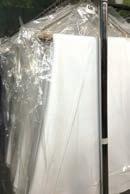
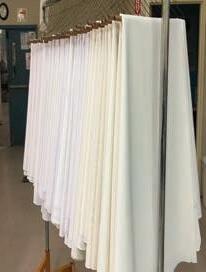
After the linens are on hang-
ers, they are bagged and tagged with the size of the linen. If they are still stained after being treated, they will be marked as stained or damaged.
Finally, the linens are counted and placed on Z racks and moved into the loading area. The morning of delivery, the linens are laid in carts and transported to the customer, where they are hung up at the customer’s facility.
THE FUTURE
While Dirty Laundry Linen Service got its start after a terrible natural disaster, and experienced the challenges of becoming a commercial endeavor, the company has grown, and is poised to continue this track.
“As we are answering the questions for this article, we are coming off our fourth consecutive record week of sales,” Johnson says. “Our capacity is about 10,000 pounds per day, and we are not at full capacity as of yet.”
He says that the location of the laundry is ideal to serve small-tomedium markets in Louisiana and Mississippi.
“We are hoping to cover as far as western Florida in the coming years,” says Johnson. “We recently added a new business development manager to our team that will be a key component for continued growth.” ALN
me when there is a problem.”
Eileen Sullivan, Mildata® product manager for Pellerin Milnor, says that the company’s Mildata MilMetrix® Computer Network provides complete personal computer monitoring and reporting on washing equipment, including batch washers, washer-extractors and dryers.
“The Mildata system can provide data collection, report generation, central programming and system monitoring,” she says. “Mildata Milmetrix records raw data such as weight, formula, machine faults, run time and diag-
nostics for each load of goods. This information is sorted and tabulated to provide several reports for any day, week or user-defined period. Color graphs are also available for each report.”
Data has been called the future of laundry operations, and information systems are becoming more engaged in plants, driving the industry.
PERFORMANCE
For Tom Kindy, regional sales director for Chicago Dryer Co., when the laundry industry talks about data, it’s talking about performance.
“To this point, everybody always looked at PPOH (pounds per operator hour), maximize PPOH,” he says. “But, it’s no longer limited to linen production.
That’s a crucial element, but it’s gone far beyond that. It’s far more reaching, and it’s expanding all the time.”
How far can data information reach into a laundry? Personnel, equipment, utilities, maintenance of the plant, even profitability—all of the various aspects that affect an operation are being tied to data information systems in an operation.
“Having this data available, and being able to analyze this data, is top of [an operator’s] list,” says Kindy.
At least, it should be high on the list.
“Data is a topic that many in our industry are still lacking to grasp and efficiently make use of,”
6 JANUARY 2018 | AMERICAN LAUNDRY NEWS www.AmericanLaundryNews.com
OPERATIONS
in Slidell
The company’s plant
Continued from Page 1
Dirty
Dirty Laundry has 70- and 170-pound dryers. (Photos: Dirty Laundry Linen Service)
Processed linens are inspected for stains or damage, then folded and placed on hangers.
The final step of the Dirty Laundry process is to bag and tag the linen.
The company uses an ironer and a folder/stacker for finishing.
Continued
Datafrom Page 1
See DATA on Page 8



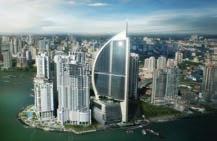


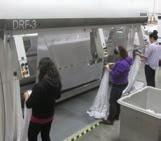
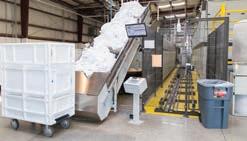








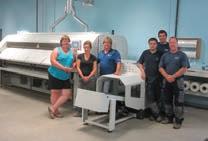

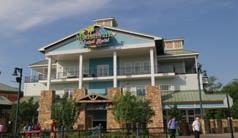











































































































By embracing a stepped approach to laundry automation, Whistler Laundry increased production 90 percent in just under four years. THE COMMERCIAL LAUNDRY STARTUP ADDED EQUIPMENT AND AUTOMATION AS IT GREW — IMPROVING PRODUCT QUALITY, BOLSTERING PRODUCTIVITY, CAPTURING NEW CLIENTS AND LOWERING LABOR COSTS. (800) 256-1073 • www.girbauindustrial.com INDUSTRIAL INCREASE THROUGHPUT. IMPROVE PRODUCTIVITY. BOOST PROFIT. INNOVATIVE LAUNDRY SOLUTIONS
says Steve Wilbur, director of engineering and product development for G.A. Braun Inc. “As our industry catches up with others in this regard, data will and should play a significant role in all aspects of plant operations.”
And it will pay, quickly, for laundries to catch up in terms of data. If a laundry installs a production management system to manage the plant, Kindy says managers immediately become aware of where there are inefficiencies.
“Just having that system in place in and of itself often improves productivity, mainly because, in all honesty, staff is aware that they are being managed, they’re being monitored, eyes are now on them,” he says.
Wilbur says that another quick, easy improvement that can come from a data system is weight. Using data provided by either rail or load conveyors, operators can ensure they are loading their tunnels or washer-extractors to the appropriate rated load weight.
“Weights are often neglected or unmanaged, allowing light loads to dominate, forcing additional expense of chemistry and utilities to process additional loads unnecessarily,” he says.
Obviously, a laundry data information system can help a plant go beyond quick fixes and aid in the operation meeting its own goals.
“Most plants have set a standard, ‘We need a thousand pieces per hour through this machine or system,’ but unless you have something to really effectively look at that over the course of, not only in real time, but also over hours and days, you don’t have a good awareness of how effectively you’re meeting those standards,” Kindy says.
The standards are entered into the system when it’s installed, and the laundry gets clear information right away whether it’s meeting the standards. He says putting a system in place makes managers aware of what’s going on throughout the facility, and they can make immediate improvements.
FINDING THE RIGHT DATA
Laundry management systems today can provide tables of information. Tables upon tables. The sheer amount can be overwhelming.
A key to overcoming information overload, according to Kindy, is tailoring the system to the needs of a particular laundry.
“Everybody sees their needs a little differently,” he says. “They need to tailor the system to engage the critical data points to them, what’s readily and easily available to them are those data points. And then once you see red flags, you can drill down to whatever you’re looking for. By having it charted
and graphed, where you can look at specific areas of the laundry, specific machines, specific operators, then it kind of slaps you in the face.”
When it comes to tailoring an information system, data points for different levels of management have to be determined, according to Keith Ware, vice president of sales for Lavatec Laundry Technology Inc.
“Does the tunnel operator need to know the gallons per pound being used by the tunnel for every load? Probably not, but it is a good indicator for the production and maintenance managers to share with the chemical provider to make sure the wash process is most efficient,” he says. “We often see operators who focus on too much information, but they cannot accurately tabulate the results to make meaningful decisions on the hordes of data some systems can produce.”
He says it is essential to have a system that has roll-up reports for different levels of management. Too much data can be counterproductive to an operation. It should be simple, concise and timely for a manager to be able to react during the day to correct issues affecting performance and profitability.
Ware recommends that each laundry focus on collecting various levels of data. First, there is short-term feedback from a data management system, such as pounds sorted, pounds washed, pounds dried per hour, pieces fed and folded, and pieces or fill rates packed out, compared with daily orders. These short-term data points allow each supervisor to react to the daily performance of the plant.
“There also are daily reports that should be used to review the day’s results: total pounds produced, total pieces produced, hourly labor by department and the efficiency of each department, order completions by product and customer, and overall pounds per operator hour,” he says. “These are next-level management reports that track performance and overall plant efficiency.”
Long-term reports are the daily results rolled up into a weekly or monthly report that help determine the performance and direction the operations is heading.
“We worked with one plant that could not understand why results were not improving after equipment upgrades,” relates Ware. “Once they reviewed the daily and shift performance, they learned the second shift was getting worse in performance while the first shift improved slightly. This allowed them to focus on the problem and put more resources on the second shift. Soon, they saw the key indicators improve. Without the pershift performance data, this issue may not have improved.”
Kindy says many don’t even realize what effective use of the equipment is.
“They may be getting consider-
able downtime in their equipment, so systems like this can gauge not only the availability but also the utilization of that equipment,” he says. “Unless you’re out there, on that floor, and you have a really good production manager who sees all this, you very often won’t get great machine utilization.”
The final step, Ware says, is to make use of the data points a plant has deemed critical to its operations.
Gotli Labs, a partnership of JENSEN-GROUP and ABS, says operators need to know the numbers, but, more importantly, the why behind the numbers. Why didn’t the machine or the employee reach their production standard? Why was the machine down for 30 minutes today? Why was there no product to process? If the manager can find an answer to the why question, they can change and improve the processes and the performance of a machine, a person, a department and the entire plant in total.
“Today’s data systems provide details on a machine’s uptime and idle or downtime,” says Wilbur. “Using this information allows operators to ensure that the root cause of idle/downtime is identified and dealt with. Too many times, machine utilization is not monitored or tracked and can easily cause significant upsides when that extra capacity is used.”
Up until recent years, Kindy says software companies providing systems have used programmable logic controls (PLC) and added sensors to the equipment.
“This has provided information, but it doesn’t give them the depth of information you can get from a built-in system, like our CHI•Touch,” he says. “We can export the data right out of the machines. They get a much clearer picture of what’s going on. Direct them to specific areas on the machines, instead of having to go on the floor and watch the machine.”
In fact, laundry operators don’t even have to be in the same zip code to make use of plant data. Today, many systems offer remote access to the information over the cloud on smartphones and tablets.

“Say your plant’s in New Jersey and you’re in Florida,” Kindy says. “You go on the cloud, and you’ll have that visibility tailored to your needs. Companies that are making this software are making it easy, making it very visual in nature, and then from there, you can drill down to find out where your problems are.”
Samuel takes full advantage of the remote reporting feature of his laundry information system.
“I have plants in New Jersey and New York. I can troubleshoot my plants, no matter where I am,” he says. “The general manager doesn’t have to be near the tunnel washer to see what’s going on. He can be back at the dryers and know what’s going on with the tunnel.”
CONSTANT IMPROVEMENT
According to Kindy, every version of the software that information companies release for the laundry and linen service industry improves. That’s because the software companies are learning what’s important to the industry in general, and to operators and managers, recognizing what the critical data points are.
One way laundry information systems are improving today, and will continue to improve, is from the standpoint of alerts. A laundry manager can be alerted to issues via text or e-mail, however he or she chooses.
“That’s what’s been happening and is becoming more prevalent,” Kindy says. “Say your tunnel goes down, or your rail system. You want to know about that right away. That’s critical, but it can be expanded beyond that, as deep as you wanted to go.”
He says a plant manager could track every single machine if it falls below standard.
“Will we all be going that deep, or want to go that deep? No, but a lot of operators will want to see all of that information, so they can monitor everything that is going on in their plant,” says Kindy.
Not only is the software providing alerts for machine operation, the alert system is moving into the realm of preventive maintenance.
“It gives you an accurate record of if these tasks have been performed and by who,” Kindy says. “It has the ability to track parts on equipment, helping with parts management.”
Wilbur adds that today’s systems can also notify the original equipment manufacturer (OEM) that parts are needed at a particular laundry, thus putting them in the hands of the operator when needed for scheduled preventative maintenance.
“This type of access/presen-
tation can also predict potential trouble with a piece of equipment before the trouble happens, giving operators the chance to correct the situation before incurring lengthy unplanned downtime,” he says.
Of course, Samuel makes use of his alert feature when it comes to preventive maintenance.
“I can say, ‘Oh, it’s Tuesday, so I have to do this, this and this on these machines,’” says Samuel. “Or, say I have bearings that have to be replaced after 5,000 hours. The system sends up a flag after 4,000 hours that the replacement time is coming up. You can prepare for it.”
THE PULL OF DATA
Up until now, Kindy says the laundry industry has been all about “push.” Push the laundry through the plant. Laundry comes in, push it out. That’s changing, and data is pointing the way.
“Now they want to look at it from the other end,” he says. “What are the requirements by the customer at the end of the day? Software is going through the system to tell me and the operation what I need to process and when to meet those requirements.”
Samuel is already using data in this fashion in his plants.
“Laundry operations can use data to improve operations by predicting what is going to happen,” he says. “You can schedule which account gets washed first to be most efficient. For example, wash the account with the lighter goods first, then wash the account with heavy goods after.”
“That’s the direction they’re trying to get to so that the laundry becomes far more efficient—intelligent laundries,” says Kindy. “And it all starts with collecting that data. You have to know what you’re accomplishing so you can, ultimately, get to those goals.”
8 JANUARY 2018 | AMERICAN LAUNDRY NEWS www.AmericanLaundryNews.com
ALN Continued from Page 6
Data
Laundry data information systems today offer remote access, from anywhere in the world. (Image licensed by Ingram Publishing)
Results on whites are excellent. On colors, you have nothing more to lose and everything to gain by trying YellowGo. YellowGo may take out color you want to keep. But if it removes the unwanted dye without damaging the underlying color, you win! You won’t have to pay for the dye-stained garments and you won’t disappoint your customers.

So use YellowGo to keep your customers happy and keep them coming back.









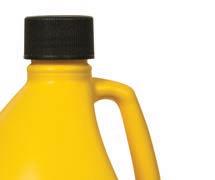


information visit
or
or
YellowGo® removes unwanted dye from fabric. For more
AlWilson.com
call us at 800-526-1188
201-997-3300
Giving more than the goods
C OMPI LED BY M ATT POE, EDITOR
CHICAGO — The laundry and linen service industry is really good at providing processed goods.
But it’s also good at doing good—giving back.
Over the past year, laundry operators and suppliers have lent a helping hand to those in need, from local groups to overseas.
Read on for a few examples of the good the industry has done over the past year.
FROM HOUSTON TO EL SALVADOR
Superior Uniform Group in Seminole, Fla., says it has had the pleasure of serving others since opening its doors in 1920. From donating to foundations near to its heart to opening its doors after tragedy strikes, Superior Uniform Group routinely gives back to those in need.
As a response to the devastation Hurricane Harvey left behind in 2017, the company opened its distribution center in Eudora, Ark., as a clothing donation drop-off site. Superior says it successfully donated over 25,000 garments to victims in Houston and its surrounding areas. In addition to the clothing, the surrounding community came together and collected cleaning supplies, food, diapers and water, along with other needed items.
Superior Uniform Group says it also participates in international humanitarian aid. The company has donated more than 60 intermodal containers over the last 17 years to the less fortunate throughout the world. A container consists of 25,000 to 30,000 pieces of brand-new donated uniforms. In 2017 alone, Superior says it donated more than 60,350 garments to cities in Central America and the Caribbean, and to various foundations and missions all over the globe, including FUSAL, Provision International and other organizations.
One full container was sent to El Salvador to the Salvadorian American Humanitarian Foundation (SAHF). Most of that clothing was donated to charity hospitals that have a limited budget and are in need of assistance. Also, SAHF does work throughout poor communities, and the donations will be a relief to many.
Superior Uniform Group sent another container to Provision International out of Billings, Mont. Provision International is a worldwide Christian ministry of outreach that strives to meet
the needs of the less fortunate and downtrodden populace. The donations to Provision International also support “Moody Ministries,” a foundation that aids a school in a low-income area with 400 children attending. These donations are vital in an area where the average wage is less than $1 per day. Areas in Haiti, Dominican Republic, El Salvador, Honduras, Nicaragua, Peru and Africa are just a few of the regions that benefit from donations.
Superior Uniform Group says its annual giving consists of hosting quarterly on-site blood drives, organizing food drives, participating in Toys for Tots every holiday season, giving to various foundations and hosting quality clothing donations. The company says it is proud of its giving accomplishments, which have become a tradition for the company culture, and it hopes to expand its contributions each year.
WARMTH FOR WAGGERS
In 2016, Magic Services Inc. (dba Magic Linen and Scott Cleaners), located in Oklahoma, kick-started its Warmth for Waggers program, says Mark Norwood, director of operations.
“We collect blankets, beds, clothing, food, cleaning supplies and toys for donations to Oklahoma City Animal Welfare to keep our furry friends warm, fed and playful throughout the winter,” he says.
The donations come from all eight of the company’s locations, as well as from local businesses.
Norwood says the company’s goal for the second annual Warmth for Waggers program in 2017 was to double the poundage donated from 2016.
BACKPACK DONATION DRIVE

As the 2017 school year began, ImageFIRST Healthcare Laundry Specialists says it donated almost 1,000 backpacks filled with school supplies to children in need through its Backpack Donation Drive. The purpose of the annual drive is to assist in giving children in need essential materials for starting the school year successfully.
Participating ImageFIRST locations each picked a charitable organization to donate the backpacks to. Each organization provided a list of the specific supplies and materials it needed. Requested items included basics such as notebooks, pencils, tissues, scissors, pencil cases, glue sticks, rulers, folders, water bottles, hand sanitizer, tape, crayons and colored pencils.
ImageFIRST says it purchased
all of the backpacks, and associates were only responsible for purchasing the school supplies. Once the drive ended, a handful of associates at each location filled the backpacks with the purchased items. Several ImageFIRST locations throughout the United States participated in the drive, with some of them donating 100 or more backpacks each.
Of the locations that donated the most, ImageFIRST says its Lancaster, Pa., branch donated 192 backpacks to Hands Across the Street; North Carolina donated 144 to Union Hill Elementary and Fairview Elementary; Atlanta donated 100 to Foster Cares; and the corporate office in King of Prussia, Pa., donated 100 to The Boys and Girls Club of Philadelphia.
ImageFIRST says its locations also regularly participate in community giving events to fulfill the company’s purpose to positively impact the lives of its associates, community, customers and patients.
CREATING AFFORDABLE HOUSING
Eastern Funding, a lender to laundry and other businesses, says it joined forces with Habitat for Humanity New York City on projects to create affordable homes for families in need. On Sept. 20-21, 2017, more than 50 Eastern Funding employees volunteered at Habitat for Humanity construction sites in Hollis, Queens.
Under the direction of Habitat for Humanity construction staff, the Eastern Funding team members helped with demolition, framing, putting down floorboards and other tasks.
In addition to employees giving their labor and time to the effort, the company says it also supported Habitat through a monetary donation. According to Habitat for Humanity New York City, the donation will help the organiza-
tion’s work in “transforming lives and communities by building quality, affordable homes.”
“Two of our fundamental principles and practices are to do the right thing and to be compassionate,” says Michael Fanger, president of Eastern Funding. “Giving of ourselves to others to improve lives and communities is doing the right thing. Helping those less fortunate than ourselves is being compassionate. Habitat for Humanity is an outstanding organization that makes it possible for so many to do the right thing and to improve lives in the process. We are honored to do our part.”
MORE HAMMERS IN USE; ADOPT A FAMILY
Continental Girbau Inc. employees also contributed to a Habitat for Humanity project near the company’s headquarters, in Oshkosh, Wis., in July, it says.
Two Continental teams donned hard hats and tool belts in an effort to build an ADA-compliant “twindominum” to accommodate two special needs families, according to Christine Skupus, director of finance administration.
“Continental’s executive committee has donated financially to Habitat for Humanity for several years, but we wanted to take those contributions a step further,” she says. “As a work family, we feel very blessed and wanted to help others who aren’t as fortunate.”
In doing so, the executive committee launched a more aggressive and ongoing philanthropic campaign to give back to the Oshkosh area community and those in need.
“One home is being built for a family of five with a teenager with cerebral palsy,” says Skupus. “The other home is being constructed for a single mother with two children under the age of two. Her adopted nephew has sickle cell syndrome.”
Habitat works in 1,400 com-
munities across the United States and in approximately 70 countries and has helped 9.8 million people achieve strength, stability and independence through safe, decent and affordable shelter.
Continental Accounting Clerk Kim Kallas enjoyed working with her co-workers on the project.
“It made me feel good to be part of a company that is involved in the community and helping others,” she says. “It was nice to work with others in the company who might not work together on a daily basis. I can’t wait to do it again.”
For the holiday season, Continental launched a companywide campaign for The Salvation Army’s Adopt-A-Family. This holiday program is designed to assist families who are in crisis as a result of unemployment, homelessness, medical issues or other difficult circumstances, and who otherwise wouldn’t have the resources to celebrate the holidays. Families who are adopted are provided with food, clothing and gifts from their sponsors.
“The company has contributed to the program for the past two years,” says Skupus, “but now we are actively getting everyone involved here.”
TOWELS TO PUERTO RICO
Magnus Textile, based in Chelmsford, Mass., donated nearly 4,000 towels to the Red Cross in Puerto Rico to aid in the hurricane relief effort following the devastation of Hurricane Maria, the company reports.
Magnus worked in conjunction with Crown Linen, as well as JSA Trucking, in the delivery of the towels to the Red Cross.
The company says Ryan Zaucha, Southeast sales manager for Magnus Textile, responded to a request sent out to the Florida hospitality community by Mary Esposito, a member of the disaster action team.
The towels were initially intended for Red Cross shelters in Florida, but after Puerto Rico was hit by Hurricane Maria, the towels were instead shipped on a Red Cross ship to Puerto Rico.
Hurricane Maria is the worst natural disaster the island has seen in nearly a century, the company says. Organizations on the ground have called it a humanitarian crisis, with the majority of Puerto Ricans stuck lacking running water and electricity. An estimated 30,000 to 90,000 homes were destroyed in the storm.
“The Magnus Textile team was grateful for the opportunity to support the Red Cross efforts in Puerto Rico,” says Zaucha. “Our thoughts and prayers go out to those in Puerto Rico still suffering from the devastation of this terrible event.”
10 JANUARY 2018 | AMERICAN LAUNDRY NEWS www.AmericanLaundryNews.com
ALN
(Image licensed by Ingram Publishing)
Laundry industry gives back in many ways
Mission Linen Supply honored for exceptional environmental responsibility
Awards judged by editors, reporters from North American media outlets
SANTA BARBARA, Calif.
— Mission Linen Supply, a provider of linens, uniforms, laundry services and select supplies, received a silver 2017 Best in Biz Award in the Most Environmentally Responsible Company of the Year category, the company reports.
Mission says it was recognized for its efforts to put environmental sustainability at the forefront of its daily operations and long-term business initiatives.
As early as 1973, Mission installed one of the industry’s first wastewater recycling systems, and the company continues to help protect the environment by implementing water reclamation systems, energyefficient equipment, paperless initiatives, alternative-fuel vehicles and numerous other “green” initiatives.

Through these efforts, Mission says it saves approximately 1,030,000 kilowatt-hours of energy and 141 million gallons of water per year.
Judged by an objective panel of prominent editors and reporters from some of North America’s most respected media outlets, this year’s Best in Biz Awards drew more than 650 entries across various categories.
“Reviewing this year’s entries in Best in Biz Awards was like going to an NBA All-Star game—you end up shaking your head in admiration, smiling and saying, ‘Oh man, that’s good,’” says Dale Dauten of King Features Syndicate, a six-time judge for the awards. “And then the next one is even better. It’s a ‘top that’ competition.”
In addition to this Best in Biz Award, Mission says it recently received a Sustainability Leadership Award in the Business Intelligence Group’s 2017 Sustainability Awards program, which recognizes organizations that have made sustainability an integral part of their business practices or overall mission.
“Preserving the environment has been a top priority for Mission since our founding in 1930, and we never stop looking for ways to take our commitment to sustainability even further,” says John Ross, Mission’s president and CEO. “It is a tremendous honor to have our efforts recognized, and we hope others are inspired to follow our lead.”
Mission has facilities throughout California as well as Arizona, Texas, Oregon and New Mexico. ALN
ARTA study shows peracetic acid kills C. diff
Study
SHAWNEE MISSION, Kan.
— Within the healthcare setting, the human pathogen Clostridium difficile (C. diff) infects nearly 500,000 people each year and results in the deaths of 29,000. The bacterium targets those who are immunecompromised, aged and on extended antibiotic therapies. A C. diff infection can result in a range of symptoms and diseases, including CDAD (Clostridium difficile Associated Diarrhea).
While there is currently significant interest in housekeeping and patient room decontamination, there is less known about killing C. diff spores during the laundering of contami-
nated patient bedding, patient gowns/clothing, healthcare worker garments, and reusable housekeeping supplies. To meet this challenge, the American Reusable Textile Association (ARTA) has undertaken two controlled laboratory studies designed to illustrate the impact of professional laundering processes on the destruction of C. diff spores.
ARTA says the conclusions from these two studies illustrate that (in the absence of an EPAapproved testing method specific to the laundering process), it is possible to use a modification of available methods to study C. diff spores.
The conclusions from Study 1 reinforce beliefs specific to the decontamination of hard, nonporous surfaces in healthcare settings—sodium hypochlorite is effective at the destruction of C. diff spores, ARTA reports. These findings also reinforce legacy beliefs specific to the historical laundering process (i.e., that sodium hypochlorite bleaching is effective at decontaminating textiles). The findings also suggest that the healthcare laundry market’s conversion away from use of chlorine containing bleaches may lead to bacterial spores that survive the laundering process.
In Study 2, focus was placed on the sequential steps employed by the modern tunnel washer laundering process and the varying physiochemi-
cal environments to which contaminated textiles are exposed.
Study 2 takes the cumulative effects into consideration and demonstrates that, when taken as an aggregate, laundering contaminated healthcare linens in the absence of chlorine bleach can produce healthcare textiles rendered essentially free of C. diff spores, ARTA says.
These results are instrumental in substantiating the efficacy of a laundering program that has eliminated the use of chlorine bleaches in response to
the prevalence of CHG-based surgical preps and hand washes, and which use peracetic acidbased laundering processes as an alternative bleaching mechanism, according to ARTA.
The association says that additional study into the efficacy of the U.S. tunnel washer laundry market on removal/ destruction of C. diff spores is warranted, as the adherence, removal, and destruction of the spores from synthetic and synthetic-blend cloths have not yet been evaluated.

www.AmericanLaundryNews.com AMERICAN LAUNDRY NEWS | JANUARY 2018 11
ALN
offers promising results as an alternative bleaching mechanism, association says
An employee at Mission Linen Supply’s Chino, Calif., facility checks the wastewater recycling system. (Photo: Mission Linen Supply)
Resolutions to make for better laundry operations in 2018
BY BILL BROOKS
RIPON, Wis. — How will you approach the year ahead? In our personal lives, many of us will make resolutions. We are going to exercise more. We are going to eat better. We are going to spend more time living in the moment and less time engaged documenting and interacting on social media. We are going to take a true vacation this year, one where we unplug from work.
In the laundry world, it’s difficult to key in on specific goals. The very nature of our business, whether it’s a hotel laundry, longterm care or commercial laundry, is nonstop. Like the post office, where the mail never stops, in the laundry room, the laundry never stops. This makes it difficult to pause and take a long-term view or to make those new year’s resolutions. I encourage all laundry managers to make time to look at their laundry with new eyes.
Here are some thoughts that laundry managers may want to use to create their own 2018 department resolutions.
LISTEN TO STAFF/ COMMUNICATION
Great things happen in an operation when communication lines are opened up. When managers are looking for more efficient ways of doing things, they should look no further than the folks who engaged in the day-to-day battles. Resolve to speak with them more in 2018. Of all the resolutions or goals that management can set, this is quite likely the easiest.
Laundries can experience a great deal of staff turnover. A simple standing staff meeting once a month is a perfect opportunity to share any process issues that may need to be addressed, hear from employees about their feedback on operations, and recognize individual employees for their efforts.
Don’t neglect that final topic. Recognition for one’s efforts can be a great way to improve morale and keep everyone focused on quality. I have talked with managers who have used recognition and improved communication to build a stronger sense of team, which reduces turnover.
Bottom line, make communica-

tion a priority in the year ahead and be surprised at what happens.
CONTROL COSTS, FIND WAYS TO IMPROVE
This is a gear shift as we go from a relatively simple resolution to improve communication to a loftier and seemingly more involved goal. But make no mistake, this one has even broader-reaching benefits.
A great starting point could be as simple as a conversation with your laundry equipment distributor. Often, they can perform an operating analysis that gives a baseline on where costs are and where there are opportunities to improve efficiency. It’s important for managers to recognize the value of a full-service distributor. A true partner is not just someone who sells and installs equipment. They should be a laundry expert and a resource you can engage for process improvement thoughts, efficiency questions, etc.
If you have a robust laundry management system that networks your equipment, but aren’t yet leveraging all its data and reporting capabilities—start. Again, this is where your distributor can help establish a baseline on numbers based on their experience with many operations in your specific industry. The important takeaway is that data should drive decisions.
Peers in your industry are also great resources to chat with. What problems have they overcome within their operation? Chances are, laundries within the same business are experiencing the same challenges.
ADOPT ONE NEW IMPROVEMENT
In chatting with staff, looking at your data or networking with other managers, you should be able to identify at least one improvement to make. With staff engaged through better communication, it should be easy to get everyone on the same page and committed to creating an overall better flow.
If that first improvement comes early on in the year, keep the momentum going and make a few more. Don’t forget to have metrics in place to measure the impact on the operation. Then, share those results with staff and management.
CREATE A REPLACEMENT STRATEGY
Nobody wants to get caught flat-footed when it comes to equipment. Unfortunately, many managers do. This is how a dated piece of equipment can become a money pit that drains resources. A quality distributor partner should be a trusted resource in this area. The best in the business empower service technicians to keep laundries from making bad decisions to repair outdated and inefficient equipment.
Discuss with your distributor and industry peers how to draft a matrix to govern when to repair equipment and when to replace. If you are already saddled with old equipment that is incurring costly parts and repair bills, it may be time to look at immediate replacement. But again, an operating cost analysis can be an effective tool to guide that decision.
Have a handle on the years of service the equipment has given, as well as the number of cycles. Every operation being different, in terms of volume, the cycle count on washer-extractors and tumble dryers is most meaningful. With this information in hand, work with your distributor to create a matrix and share it with management.
Being proactive when it comes to equipment replacement is one of the best things a laundry manager can do. Too often, we see
operations run dated equipment well past its useful life, unaware that the efficiency of new models can quickly produce substantial ROI to pay for the upgrade. Sometimes the old adage, “If it isn’t broke, don’t fix it,” can be a costly course of action.
THINK BIGGER PICTURE (LOOK AT DATA)
I mentioned in the opening that the nature of a laundry operation is one of constant flow. Linens arrive in the laundry room, get processed and are sent back out. When staff arrives the next day, they dig into the same routine. It’s easy to lose sight of the bigger picture. Victory is solely based on whether the team got today’s loads turned around and back on the shelves/floor/carts.
Resolve in 2018 to elevate from the day-to-day and take a bigger-picture look at the operation. Look for new ways to measure success. Can the operation cut costs with simple changes, such as loading machines before leaving at night and utilizing delayed-start features on the washers? This small change can help stagger staff scheduling and have loads ready to move to dryers when the first employees arrive. Would adding an ironer or other equipment raise finished quality? Could

the addition of wet cleaning for a hotel become an additional revenue source without adding employees?
Think outside the box. Question how you can both better collect and better use data to deliver better results. Technology in our industry has advanced to the point where we can no longer measure success by if the pile of laundry is less than what it was when we arrived at work.
FINAL THOUGHTS
Every year is a blank slate to write a new chapter of our lives. Why not take the same approach in our laundries and challenge staff to do the same? Resolve to improve. Resolve to be forwardthinking. Resolve to build teamwork. Resolve to use technology to your facility’s advantage. Resolve to look at your laundry with fresh eyes.
By employing these resolutions, we can perhaps, in the process, raise the image of our operations among those we work with every day. ALN
Bill Brooks is North American sales manager for UniMac®, a provider of on-premises laundry equipment. To learn more about UniMac, visit www.unimac.com/ opl101 or call 800-5875458. Brooks
12 JANUARY 2018 | AMERICAN LAUNDRY NEWS www.AmericanLaundryNews.com OPL 101
While laundry doesn’t stop, it’s essential to examine operations, find ways to improve
(Image licensed by Ingram Publishing)
AND




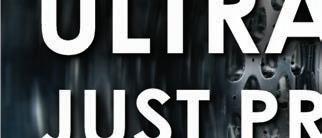













It remains the only proven, reliable technology that filters, purifies, and recycles up to 80% of wastewater, while reclaiming water temperature & chemistry in the process.










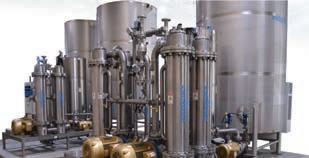








PERFORMANCE GUARANTEE Let’s Beat those Savings in 2018! |1-800-442-4360 SUSTAINABILITY INTEGRATION RELIABILITY INNOVATION
PANEL OF EXPERTS
2018 Panel ready to share experience, unique perspectives
Textiles
spec and package particular commercial textiles for laundries in a manner that saves time and optimizes performance.
Watching manufacturers make mistakes is how we build our company. In 1947, Monarch Brands was founded on repurposing textile irregulars and byproducts for secondary markets.
Over the last 20 years of working in the textile industry, I’ve seen just about every scenario of how laundry products are created, distributed, used and then discarded. When I began this journey in 1997, domestic textile mills were closing due to Central American and Asian competition. I followed the textiles, visiting countries around the world to develop a pipeline for product “byproducts,” distressed merchandise and irregulars.
At the time, our value to our customers was in providing discounted merchantable products for industrial applications. However, it was during these trips that we began to identify the optimal way to deliver all categories of towels, sheets and microfiber products to the industry.
Every mill has a strength (even failure is a strength for specific product lines). We mapped the global mill landscape to determine which mills to rely on for every quality of product offered, and hired agents in important producing countries to represent our interests abroad. Today, the resultant product mix satisfies every laundry textile need.
We believe that reviewing the laundry processes allows us to

One of our favorite challenges is working with customers to develop textiles that tackle a specific task within budget. A field expert, with in-depth vertical knowledge, spearheads the project. They orchestrate premier manufacturers, inspection teams, global logistics and marketing outreach to deliver superior firstquality, private-label textiles that outperform the status quo.
Our knowledge of opportunistic purchases allows us to present a different value proposition. Our company grew by understanding the practical spaces where irregulars provide a savings and functional value over first-quality counterparts. By providing an outlet for our mills to liquidate obsolete inventory, budget-savvy laundries save money on products that just get the job done.
Lastly, I recognize that our industry produces massive amounts of waste. To counter this, we offer textile buybacks for laundry rag-out inventory. By recycling textiles for production credit, we provide a cyclical value to customers and keep millions of pounds of textile waste out of landfills.
Our products have found national placement through distribution and laundry facilities, as well as regional and national retailers. Categories now include a full line of microfiber cloths, mops, towels, sheets, top of bed, and bath and accent rugs. I am a proud third-generation owner of a family business that has grown to national prominence in 20 years. I have honed my skill set through years of customer and manufacturer interaction,
strengthened by my team of global industry experts.
I’m honored to be a member of this Panel and look forward to providing knowledge in my category, as well as learning from your shared experiences.
volume from HCA.
In 2001, I joined Crothall Laundry Services as regional manager, and the laundry division grew from five laundries to 43 in just over eight years. Operating and managing a mix of plants processing volumes of 1 million to over 65 million pounds was a challenge. It was a fastpaced eight years, as growth presented the challenge of maintaining core values and finding great leaders to operate the plants.
I am the vice president of sales for Lavatec, and I am excited to share my experience and knowledge. I have been in the laundry industry for 30 years, managing both hospitality and healthcare plants.

My laundry career started in 1985 at Walt Disney World as operations manager for Disney’s Textile Services. We processed over 100 million pounds of guestroom and food and beverage linens, and 13 million uniforms for 28,000 hotel rooms and four theme parks, with 580 employees covering three separate facilities. Disney started with a single mixed plant but growth dictated that two more guestroom linen plants be added during my 10-year career.
After Disney, I joined National Linen Service in 1996 in Youngstown, Ohio, a mixed-use operation with a separate linen and uniform facility. I helped to turn around this unprofitable plant before the company sold it to G&K.
After the Youngstown sale, I transferred to Portsmouth, Va., as general manager, taking a highly seasonal plant from an annual loss to profit in 12 months. Volume swings from summer to winter were a 50% reduction in weekly sales. We sold off unprofitable routes, streamlined production and improved loss collection.
I joined Tartan Textile in 1999 as vice president of the Southeast division, overseeing five plants processing over 100 million pounds of healthcare linen. We processed work in Virginia, Georgia and Florida, while handling a significant portion of
I then joined Crothall’s consulting side of the business with Victor Kramer Co. in 2007. As vice president of consulting, I was involved in many design and renovation projects, process improvements and plant audits for a multitude of customers in all aspects of the industry. I spent a large portion of time consulting with Ritz Carlton and Marriott properties on developing new laundries, management development and managing inhouse laundries.

In 2009, I transitioned to the equipment side, working with AquaRecycle as vice president of sales. We introduced the industry to ThermalRecycle dryer heat recovery and supported customers with laundry operations on the water recycling side.
With Lavatec, I oversee sales throughout North America, South America and the Caribbean. In my role, we work with clients to develop laundry operations solutions and help them make the best equipment decisions for the long-term success of their organization. My sales and support team members all have laundry operations backgrounds, allowing years of experience to provide plant layouts and designs, equipment audits and innovative solutions for our customers.
This role provides the opportunity to stay involved with operations teams in a variety of industry sectors, learning as much as teaching.

In all my years, I have believed in a simple philosophy when attempting to solve a problem. Ask a single expert to solve a problem and you get one person’s opinion. Ask 10 people to solve a problem together and a miracle occurs. Hopefully together, we can answer your questions and find workable solutions for your operations.
I have been a director of sales engineering at Softrol Systems since February 2017. I received my Bachelor of Science in industrial engineering from the Georgia Institute of Technology (Georgia Tech). I started in the textile cleaning industry in 1990 as an industrial engineer with E.K.M. Management Services, which is a consulting company to the textile rental industry.
I established work measurement programs utilizing labor standards and facilitating operations management to increase productivity and improve financial margins during my eight-year consultant phase with E.K.M. Management Services.
I then spent 18 years with AmeriPride Services, implementing productivity improvement systems and providing direction, training and support in improving our textile inventory controls. I have come full-circle in my career path by joining the Softrol team as we promote automated production data collection systems to improve the productivity of laundry operations.
I am very proud of our Softrol business partners who have worked with us this year using the automated production data collection processes to understand the scheduling of their production operations (soil, washroom, finishing and load building/pack out) to optimize their labor and equipment.
We have learned a lot about “balancing” the production outputs of our systems, machinery and operators within our laundries based on customer needs and using data to guide us.
We (Softrol, our business partners and our industry) are on the verge of understanding production optimization within our organizations. This understanding has been the biggest challenge of my career. Twenty years ago,

14 JANUARY 2018 | AMERICAN LAUNDRY NEWS www.AmericanLaundryNews.com
Our new panelists introduce themselves and their operations, share their accomplishments, and discuss the challenges of their industry segments
Equipment Manufacturing Keith Ware Lavatec Laundry Technology Inc. Beacon Falls, Conn.
See EXPERTS on Page 16
Hal Kanefsky Monarch Brands Philadelphia, Pa.
Consulting Services
Michael Dodge Softrol Minneapolis, Minn.
Does your laundry need a workhorse?
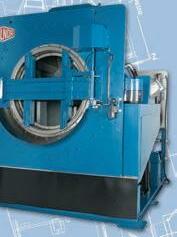
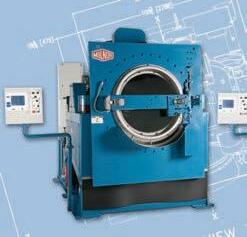

Our M-Series Washer-Extractors are built for optimum performance and easy service access. The simple design with single pivot two-way tilt and large door provide safe, fast and efficient loading and unloading. The open access allows for easy and simplified maintenance. Milnor’s unique and innovative SmoothCoil™ Suspension System means maintenance-free, superior vibration dampening with less wear and tear. Our intelligent bearing design provides three water seals and an excluder seal mounted on an easy-to-replace seal sleeve, along with a leak-off cavity to keep water and chemistry away from bearings. All of this and more, built to Milnor’s legendary ruggedness and durability.
Contact an authorized Milnor distributor or call 504-712-7656 to find out more.


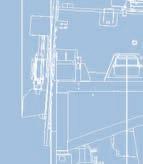

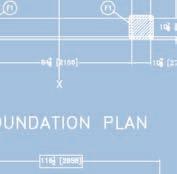
For more information, scan this code.

www.milnor.com















Optional integrated load chute door for automated washer-extractor systems. 275 lb., 400-500 lb. and 600-700 lb. capacities available.
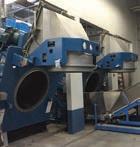
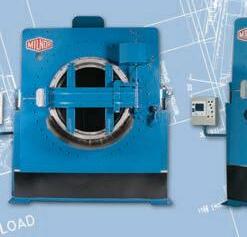










the technology was deficient to our needs in understanding the balance of production flows within our laundries for this optimization dream. Now, it is within reach and I am excited to be a part of this experience!
represents our biggest expense. Whereas equipment can be amortized over time, providing service remains constant. To equip a service van properly and hire a qualified technician, the cost approaches $75,000 per year. We need to continue to educate ourselves on the new machines being used, as well as how to program formulas, and at the same time provide a satisfactory finished product for slightly more cost/cwt than 25 years ago.
All and all though, it is still a matter of pride when we take over an account that has had a high reject rate, and after evaluating equipment, procedures and formulas, provide a program that solves the problem. We may not always be the cheapest, but we are content to be the best at what we do.
work with several exceptionally talented leaders, all of whom have shown me a wide array of challenges and brilliant tactics to achieve success. The various types of operations I have worked within has included co-operative, central and on-premises laundries as both an in-house and contract manager.


Currently, our operation is closing in on completing a plan to standardize all cubicle curtains throughout the many facilities of the organization. The three-year plan is to be able to treat cubicle curtains as common goods rather than hundreds of unique items to be tracked, monitored and substituted on an ongoing basis.
Through my searching for more laundry knowledge, and the prodding of my supervisor, I joined a professional Association for Linen Management (ALM) chapter, the Upper Mississippi Valley Association of Institutional Linen Management, and have never regretted it. The knowledge I have gleaned from these laundry professionals over the years has been priceless.
In February 2015, through the ALM, I received my CLLM certification. I also had the privilege of attending the production and operation phase of the Laundry and Linen College in the fall of 2016.
was asked to join this Panel and sit among the experts, and hope I can add some value and pay forward the advice, support and encouragement that I receive from this industry’s experts.
Iwould like to start out by thanking the editors of this magazine for choosing me to contribute to this year’s Panel of Experts. I have been reading and benefitting from trade periodicals like this for most of my 32-year career in the industry.
Currently, I am a regional sales manager for Epic Industries, a division of Simoniz USA, headquartered in Bolton, Conn. Simoniz purchased the New Jersey-based Epic Industries in 2013. Over the next few years, we built a new 50,000-squarefoot warehouse and added an additional 22,000 square feet of manufacturing space.

As of this writing, we are currently manufacturing from 300,000 to 500,000 pounds of finished goods every day. That includes products for automotive industry, food service sanitation, janitorial supply and laundry, and now with the recent acquisition of Harvard Chemical, a complete line of products for carpet care.

Operating from my home base of Pittsburgh—home of the Steeler Nation—I find a real challenge in the ever-shrinking independent customer base. So many of the smaller OPLs have closed, merged with larger institutions or have a sales contract with national companies.
When I first started out in the laundry chemical field in 1985, Pittsburgh and the surrounding areas, such as Cleveland and Harrisburg, were home to many large, in-house laundries. Today, most of that business has been farmed out. We still have a fair amount of the OPL business found in nursing homes, as well as independent hotel and motel laundries.
There is also the ever-present challenge of how to provide a quality product, state-of-the-art dispensing systems, and providing consultation services to the end-user and still be competitive financially. The cost of providing service has steadily risen over the past 20 years, and today
I have been the textile processing department manager of the Tarrant County Hospital District (dba John Peter Smith Health Network) on-premises laundry in Fort Worth for the last three years. The plant provides healthcare linen for all of the Tarrant County Hospital District’s healthcare facilities, including the main hospital and pavilion, the community health centers, and the school-based clinics.
I first visited this facility in 2008 when they were replacing their tunnel and dryers. The organization I worked for at that time was asked to provide temporary service during the shutdown. While the installation was under way, I was given a tour of the facility by the textile manager. The facility was well designed, organized and meticulously maintained. I told him that I would enjoy managing this plant someday. Fast-forward seven years, and here I am, exactly where I wanted to be.
My first laundry assignment began in 1995. It was part of a bundle of support services at a facility near Philadelphia. I managed several departments that included both EVS and the OPL. During the 10 years I worked there, I found myself drawn to the laundry operation and spent more time there than any of the other department in my group.
There was no doubt that my next opportunity to develop was going to be in healthcare laundry, even though I very much enjoyed my time in EVS. I made that move and have never looked back with even an ounce of regret.
In between these experiences, I have had the great fortune to
With over 90% converted to the “standard panel,” we believe we will be complete very soon. This will allow virtually unlimited substitution of curtains (with any other curtain) and ensure both compliance and timely changeover, while eliminating the need to return the previous curtain in place after processing.
This has been an interesting challenge, and with the support of leadership, we will be able to ensure an improved level of accountability and performance within our operations.
My biggest difficulty is performing my laundry supervisory duties while staying aware of my correctional officer duties. I have learned some tough lessons over the years I have worked in this environment, but have also experienced some very rewarding ones as well. However, many people have taken time out of their busy schedules to graciously and patiently guide me through every obstacle I have faced, and my hope is to do the same for someone this year.
Thank you again for this opportunity.
Hello, my name is Phil Jones, and I have been in the laundry industry for almost 25 years, starting with the Walt Disney World Textile Services Division. The textile services operation had three types of laundries, which were linen, food and beverage, and costuming, and I had the opportunity to manage in all three facilities.

Ten and a half years ago, I was hired as the director of laundry operations for the Sheraton Vistana Resort in Orlando, a large vacation ownership resort. The laundry at that time was processing around 5 million pounds in a 5,000-square-foot facility, and much of that was being outsourced. Through partnerships with various equipment companies, I took on the challenge of redoing the operation without adding any additional space, and currently the laundry is producing 9.5 million pounds per year with minimum outsourcing.
I have been reading American Laundry News for the last 10 years and have learned so much from the articles and past Panels that to be chosen to be on the Panel of Experts is indeed an honor I do not take lightly.
I began working at the Ramsey County Correctional Facility in 1993. In 1995, I started working part-time as the laundry officer, and in 2006 was promoted to the full-time laundry supervisor.

Our OPL processes approximately 800,000 pounds of laundry annually (depending on populations) for four county correctional facilities. These facilities include the Ramsey County Correctional Facility (550 beds), the St. Paul Law Enforcement Center (575 beds) and two juvenile facilities (25 and 50 beds).
My experience in laundry stems from a rather odd situation. I was placed in the laundry as the laundry supervisor/corrections officer but knew nothing about laundry, let alone processing it. However, one day there was a man placed on my crew who had 40 years of experience in the laundry industry, and he taught me so much that laundry, and the processing of it, became interesting to me.
After a varied career, including MEP engineering and energy procurement consulting, I somehow found myself starting up a commercial healthcare laundry focused on servicing the postacute/long-term care industry.
One of the key attractions for me to enter this industry is the opportunity to achieve process improvement, automation and energy efficiency that has not yet been realized.
What I found out shortly after starting is that our industry has a camaraderie, cohesiveness and an openness to sharing of ideas that is really refreshing. There are some amazing people that I had the opportunity to get to know that are willing to spend time working together as a group for the greater good.
The laundry industry, along with the healthcare industry, faces new challenges across many fronts, both on the revenue and cost sides. Getting in front of them and bringing awareness to challenges, threats and opportunities is something American Laundry News does exceptionally well.
I feel that as a newcomer with my diverse background, I can provide a fresh and different perspective. I am humbled that I
I also serve as a consultant as needed for other hotels and resorts within Starwood hotels and Vistana Signature Experiences.
One of the biggest challenges I am facing is the continuing change from the traditional weeklong stays with a mid-week clean only to newer products that allow stays of one night or more that has daily service. The poundage processed has been steadily increasing year after year, even though the number of villas has not increased. We do not have any additional useable space to expand, yet we must continue to increase poundage every year.
It is my pleasure to serve on the Panel of Experts this year, and I look forward to providing any helpful insight I can to all of us in the laundry industry.
16 JANUARY 2018 | AMERICAN LAUNDRY NEWS www.AmericanLaundryNews.com
Continued
Page 14
ALN
from
Experts
Healthcare Laundry Richard Engler, CLLM John Peter Smith Health Network Fort Worth, Texas
Hotel/Motel/ Resort Laundry
Phil Jones, CLLM Vistana Signature Experiences Orlando, Fla.
Other Institution Laundry
Todd B. Jenson, CLLM Ramsey County Correctional Facility Maplewood, Minn
Commercial Laundry
Brian Polatsek EcoBrite Linen Skokie, Ill.
Chemicals Supply
Rich Fosmire Epic Industries, a Division of Simoniz USA Bolton, Conn.


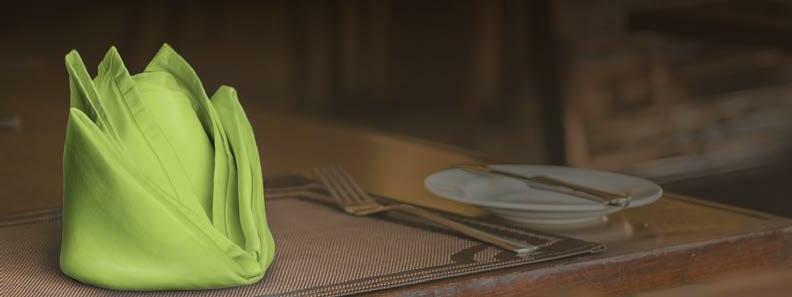





























cloth
800 821 2221 | imagine@americandawn.com | americandawn.com
by TM The Lunchkin TM is intended to extend the color o ering of The Greenie. Six additional colors to replace paper napkins in any lunch setting. Beyond the environmental benefits of The Greenie, The Lunchkin creates a fine dining experience -- at lunch. And the cost is about the same or less than paper napkins! Made in USA Fabric By Milliken. Made in USA Fabric By Milliken.
Replaces single use paper napkins at a lower cost
Creates a better dining experience and sets you apart in the marketplace
Lasts over 100 wash cycles
Never ironed, less energy use
Saves up to 5 billion pounds of trash per year Signature Plus is a registered trademark for Milliken & Company for fabrics. • Smaller 15” x 12” Lap Size
Your table linens touch every Customer at every event. Your linen needs to speak their language… fresh, clean, safe, consistent, reliable, and yes - elegant. They count on it. Together, ADI and Milliken have set the standard of linen excellence for decades. USA made Signature Plus fabric. Soft luxurious hand, consistent long-lasting color. Whites that stay white, and colors that stay bright. ADI American Dawn. The world’s leading supplier of Milliken Signature table linen products. Count on us. The Greenie® is America’s choice to replace paper napkins! At breakfast and lunch, if every American uses reusable linen napkins instead of paper, we can save 60,000,000 trees per year! That means cleaner air, less water use, less energy use, less waste in landfills, less toxic paper production chemicals. And the best part... Money raised through the sale of this product is given back - to educate our children on keeping the planet clean and safe. 84% of Americans prefer
vs paper at the table. The Greenie® Because it’s the right thing to do.
Lunchkin
•
•
•
•
•
Up To Date Laundry opens new healthcare laundry facility
Expansion to double processing capacity, add jobs over five years, company says
BALTIMORE — Up To Date Laundry Inc. celebrated the grand opening of its new healthcare laundry processing facility in East Baltimore at Hollander Business Park in December, the company reports. Baltimore Mayor Catherine E. Pugh and regional business leaders attended the event.
Up To Date Laundry launched its business in Baltimore in 1946, servicing ships arriving at the Baltimore Harbor from New York and Virginia, as well as retail clientele of the local community.
“Today is an exciting day for myself, Up To Date Laundry and the City of Baltimore,” says Nancy Stair-Carter, CEO of Up To Date Laundry. “I am proud to have been able to expand our footprint in this city that I love and was very near and dear to my father’s heart.”
Up To Date Laundry says it will add an additional 72 million pounds of processing capacity and 400 new jobs once all phases of the buildout are complete, over the next five years.
“We chose this location to continue our commitment to the City of Baltimore by providing jobs to areas that can benefit from additional employment opportunities and by building our facilities focusing on sustainability of the environment,” says Mark Carter,
president of Up To Date Laundry. “We’re confident that we’ll be serving the healthcare community in the Mid-Atlantic region for another 70 years.”
Up To Date Laundry is working closely with the Baltimore Development Corp. (BDC) and the Mayor’s Office of Economic Development in support of the goals associated with the “One Baltimore” program to create jobs in East Baltimore.
“We congratulate Up To Date Laundry on their continued success and, specifically, on this expansion,” says William H. Cole, president and CEO of BDC. “In addition to BDC’s loan program, Up To Date Laundry was also able to take advantage of our façade improvement grant, which is now citywide. These programs exist to help businesses, like Up To Date Laundry, grow, thrive and create new jobs right here in Baltimore.”
Up To Date Laundry received financing for the project from Revere Bank.
“We have been a partner of Up To Date Laundry through the upgrade of their current facility, and we are very proud to support their continued growth,” says Ken Cook, co-president and CEO of Revere Bank.
Up To Date Laundry says it partnered with FRP Development Corp., a full-service real estate development company that spe-






cializes in land acquisition, construction and property management to lease the 79,600-squarefoot manufacturing facility built in a Maryland Certified Enterprise Zone.
“FRP is excited to have the opportunity to construct this laundry facility for such a storied company in Baltimore,” says David H. deVilliers III, vice president of FRP.
This project is in conjunction with the expansion of laundry services that Up To Date Laundry provides to the Johns Hopkins Health System in support of the HopkinsLocal initiative, the company says.
Launched in fall 2015, HopkinsLocal harnesses Johns Hopkins University and Health System’s economic activity to promote growth and employment in Baltimore.
“This expansion is an example of what we hope will be accomplished through our HopkinsLocal commitments,” says Kenneth Grant, vice president of general services for Johns Hopkins Hospital and vice president of supply chain management for Johns Hopkins Health System.
“In supporting the growth of this local woman-owned business, we are excited about the new jobs this will create for our communities most in need of job opportunities.” ALN
Tours highlight TRSA Production Summit agenda
companies serve any market (F&B, healthcare, hospitality, industrial) will recognize how wider use of such “cells” might more effectively address the industry’s evergrowing number of textile products requiring separate processing.
with valuable skills and training. A retired Army Reserve lieutenant colonel, her military career spanned 22 years (active and reserve), including roles in performance management, recruiting, staffing, training and skills development.
Breakout sessions on the Anaheim agenda include:




• Effective Inventory Control for Production Departments
• How Smart Phone Apps Enhance Your Business
ALEXANDRIA, Va. — Visits to four industry facilities top the agenda for TRSA’s Production Summit and Plant Tours, Feb. 21-22 in Anaheim, Calif., according to TRSA, the association for the linen, uniform and facility services industry.
Now in its fifth year, the twice-yearly Summit enables linen, uniform and facility services operators to take home a wealth of ideas for improving performance and production management by meeting with peers and viewing high-productivity plants, says TRSA.
Three of the four facilities to be visited are on the same site: Magic Laundry Services’ 7-acre campus in Montebello, where the operations, each with washer-extractors and tunnel washers, share newly expanded loading docks. Otherwise, the three are separate operating plants, dedicated to distinct workflows for hotels’ customer-owned goods (COG).
TRSA says Summit attendees whose
The other destination will be the MODRoto manufacturing plant in La Mirada, where attendees will get acquainted with the variety of molding techniques that distinguish cart designs as MODRoto personnel describe and demonstrate processes. TRSA says those on the tour will see how carts are engineered to pack big loads with minimal tare weight and provide other ergonomic benefits.
Summit general sessions and breakouts will examine current industry productivity trends and help attendees hone management and technical skills, according to the association. These presentations and lessons learned from plant tours enable those in attendance to improve everyday production management decisions immediately following Summit participation.
Meeting agenda highlights include a keynote presentation by Lisa Rosser, a military hiring and retention strategist, providing techniques and tips to attract veterans
Other topics to be presented include: How Certification Inspection Assesses Hygiene — Attendees become familiar with the checklist for Hygienically Clean certification, learn to identify critical control points throughout the laundry process and prepare to upgrade plant quality management documentation.
Contributing to Positive Company Culture — Speakers presented by TRSA’s Women in Textile Services Committee will discuss how to foster a company’s core values and develop a team around them, a must for creating shared and personal accountability for achieving department and corporate goals.
Preventive Maintenance (PM) to Protect Your Bottom Line — Tactics will be shared to improve PM to generate significant savings, including best practices for plants of all sizes, communication tactics that keep PM on schedule, and guidelines for production’s role in PM.
• Maximizing Return on TRSA’s Apprenticeship & Internship Programs
• New OSHA Fall-Protection Rule Compliance
Designed to offer the greatest benefits to general, plant and production managers, engineering and maintenance personnel, as well as others responsible for production supervision, inventory control and product quality, the Production Summit and Plant Tours series maximizes participants’ continuing collaboration with experienced professionals from TRSA member companies, the industry’s most productive and profitable organizations, the association says.
TRSA says 100% of the attendees who evaluated the October 2017 Summit indicated they would return to another Summit.
For more information, visit www.trsa. org/productionsummit
18 JANUARY 2018 | AMERICAN LAUNDRY NEWS www.AmericanLaundryNews.com
ALN
California event in February to include visits to four industry facilities
Up To Date Laundry says it is committed to the city of Baltimore by adding jobs and having a sustainable operation. (Photos: Up To Date Laundry)
The new facility will increase the company’s processing capacity by 72 million pounds.
Executives gather for roundtable at TRSA Healthcare Conference
SALT LAKE CITY — Nearly 25 CEOs and senior executives from North America’s largest healthcare linen, uniform and facility services companies participated in a roundtable during the recent TRSA Healthcare Conference here, reports TRSA, the association for the linen, uniform and facility services industry.
Facilitated by TRSA President and CEO Joseph Ricci, the CEOs, representing organizations responsible for processing more than 70% of healthcare linens, scrubs, uniforms, garments and other reusable textiles, discussed issues and trends including:
• Processing hygienically clean healthcare textiles (HCTs) and infection control.


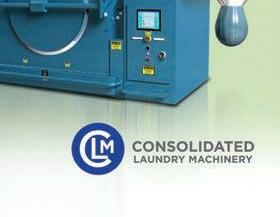


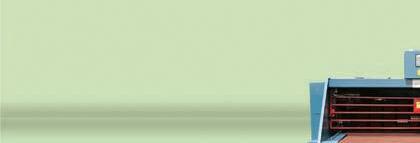


• Improving crisis/disaster planning and response.
• Opportunities to grow the market including long-term care facilities.
• Competition from OPLs and non-profit laundries.
• Consolidation of the healthcare sector.
CEOs/executives in attendance included:
• Randy Bartsch, Ecotex Healthcare Linen Service, SeattleTacoma.
• Bob Brill and Greg Shames, Medico Linen Service, Los Angeles.
• Brad Goldstrom, Ameritex Services, Omaha, Neb.
• Christian Luneburg and Ron Seaman, Florida Linen Services, Pompano Beach, Fla.
• Karl Fillip, NOVO Health Services, Atlanta.
• Ben Fox, Alsco, Salt Lake City.
• Ed Hazard, Kleen Laundry, Lebanon, N.H.
• Tim Higdon, Faultless Healthcare Linen, Kansas City, Mo.
• Jesse Jassny, MediCleanse Linen Service, Seattle-Renton.
• Leonard McCullough, Linen King, Tulsa, Okla.
• Tim Montague, Foussard Montague Associates, St. Paul, Minn.
• Brain Polatsek, EcoBrite Linen, Skokie, Ill.
• David Potack and Michael Potack, Unitex, Elmsford, N.Y.
• Judy Reino, Reino Linen Service, Gibsonburg, Ohio.
• Liz Remillong, Crothall Healthcare, Chesterbrook, Pa.

• John Shoemaker, General Linen & Uniform Service, Detroit.
• David Stern, Paris Cos., DuBois, Pa.
• Cary Wood, Angelica Corp., Oakbrook Terrace, Ill.




Reflecting on media attention questioning laundry cleanliness and natural disasters across the country, TRSA Chair David Potack, Unitex, emphasizes that “it is important to develop relationships and plans before a crisis. The process begins with a discussion of self-assessment and contingency planning including identifying stakeholders and com-
munications.”
“There is a growing gap between purchasing and customer service,” says TRSA Healthcare Committee Chair Liz Remillong, Crothall. “Healthcare consolidation is forcing vendors to increasingly negotiate and contract with purchasing departments often removed from daily operations, creating confusion between customer requirements and expectations and contract stipulations. It is our job to educate and
bridge this gap.”
The CEOs also discussed the importance of managing linen and minimizing its loss from theft and abuse, as well as recapturing market share of reusable textiles lost to disposables, particularly incontinent pads, barrier gowns and surgical scrubs. To recover, reusables’ value can be leveraged based on life-cycle assessments measuring environmental impact, waste reduction and costs, says the association. ALN
www.AmericanLaundryNews.com AMERICAN LAUNDRY NEWS | JANUARY 2018 19 Now “green” comes standard: High e iciency/low emissions burner • Steam-heated, gas fired, 200-1200 lbs. dry weight • Robust engineering—CLM lasts for the long haul • Productivity—lowest drying times • Long history of happy repeat customers • Maintenance—easy to maintain; top notch service support team • E iciency—low utility usage from precise control technology • Wide range—1 door and 2 door pass-through tumble dryers • Customizable design—footprint, controls, tilting and doors For more information call 323-232-2417 or email sales@clmco.com | We want to see you at the Clean Show #3185 | WWW.CLMCO.COM Consolidated Laundry Machinery Dryer Specialists Why buy a dryer from anyone but a company that knows dryers inside and out? Made in the USA New Features! Roll mats with the backing up or down Control the belt automatically or with pedal • Productivity—does the job twice as fast • Safety—designed to reduce operators’ long and short-term injuries • Unique Design—keeps mats from being damaged • Discharge—direct to cart or return to feeder • Stop hand-rolling mats—increase speed and reduce costs For more information call 323-232-2417 or email sales@clmco.com | We want to see you at the Clean Show #3185 | WWW.CLMCO.COM Consolidated Laundry Machinery Mat Roller Experts Why buy a mat roller from anyone but a company known for building “workhorses” that last ? Made in the USA CLM 1-2 island ad ALN.qxp_Layout 1 2/10/17 2:14 PM Page 1 ALN_Jr Page.indd 1 2/13/17 9:36 AM For more information call 323-232-2417 or email sales@clmco.com | WWW.CLMCO.COM For more information call 323-232-2417 or email sales@clmco.com | WWW.CLMCO.COM 8/14/17 2:23 AM
CEOs representing organizations responsible for processing more than 70% of healthcare linens, scrubs, uniforms, garments and other reusable textiles discussed issues and trends during the roundtable. (Photo: TRSA)
NEW YORK —
Exhibitors
at HX: The Hotel Experience, reported brisk leads and business interest at the Nov. 12-13, 2017,

trade show here at the Jacob K. Javits Convention Center, says Hospitality Media Group LLC (HMG), producer of HX.
“We met with potential hotel clients (from) across the United States, Europe, Asia Pacific, South America, the Caribbean, some major hotel brands, and hotel management companies. No question, the best show I’ve attended as an exhibitor in
many, many years,” says Terry Lawrence, vice president-U.S. sales, Homtime (Vancouver, Wash.) and HX 2017 exhibitor.
“The leads were plentiful and the interest was very high.”
HX featured more than 300 exhibitors and 7,200 regis -
tered attendees, and presented 33 conference sessions in three show floor theaters, headlining industry thought leaders from companies such as Disney, Marriott International, Two Roads Hospitality, High Gate Hotels, Skift, Kimpton Hotels & Restaurants and White Lodging, according to HMG.
The HX360° Tech Innovation Zone headlined out-of-the-box new technology, including two types of virtual reality demonstrations, robotics, and a tech and mobile app support team.
Also on the show floor was a full build-out of the 2017 Foodservice Pioneering Concept designed by Christensen Consultants of San Jose, Calif. Pivot Point utilized a dual personality to adjust to the needs of hotel guests, says HMG. By daylight hours, Pivot Point made food its primary focus; by night, beverages took the lead. The pivot maneuver was accomplished by placing the back-bar areas on a large turntable that rotated.
“The Foodservice Pioneering competition supports innovation, which is a key to staying relevant in our industry,” says Phil Robinson, group show director. “It’s a clever design applicable for any type of hotel property, and fulfills the show’s promise to present unique ideas that improve the guest experience.”
HX also brought back fan favorite competitions/awards, including the Editors’ Choice Awards and the third annual TECHPitch Competition. Winners included: • ALICE, TECHPitch winner, for its cloud-based platform that unifies staff and guests to seamlessly handle any request.
• CafeXpress Touch by Amenity Services, Food & Beverage Editors’ Choice winner; Low Water Energy (LWE) steamer by Vulcan, Editors’ Choice Foodservice Equipment winner; Publix Delivery, powered by Instacart, Editors’ Choice Guest Amenities winner; FlexSafe by AquaVault, Editors’ Choice Hotel Products winner; and Media Box by Media Carrier, Editors’ Choice Technology winner and Best in Show winner.
HX also extended the attendee experience off the show floor with a back-of-the-house restaurant tour and dinner at New York City’s The Black Barn Restaurant.
“This was an incredible evening, with an impeccable fourcourse, farm-to-table dinner, and a kitchen tour led by chef-owner John Doherty,” says Robinson.
20 JANUARY 2018 | AMERICAN LAUNDRY NEWS www.AmericanLaundryNews.com
More than 7,000 hospitality leaders, decision makers attend HX show in New York City JOIN US! MARCH 19-21, 2018 THE DESOTO SAVANNAH, GEORGIA Regi aNOW OPEN at People Say... I attended my first ALM IMPACT conference in 2016 and was so glad I did! It was an excellent experience and I highly recommend it for anyone interested in sharing, learning, and networking with some great industry experts.
Remillong VICE PRESIDENT, CROTHALL HEALTHCARE y You Should A end... STAY AHEAD OF THE CURVE Techniques and technology are constantly changing. Learn about those changes before your competition! NETWORKING OPPORTUNITIES Whether in sessions or at breaks and evening events, you will meet other textile care professionals, as well as find new product resources and solutions. EDUCATION Gain contact hours at multiple Educational Breakouts and Power Sessions. AND MORE! Visit www.ALMnet.org/IMPACT for full details, including hotel information, conference schedule, and sponsorship opportunities! Learn M e... Great atmosphere. Great resources. Very informative. Awesome people. Overall, great experience!
Scozzari GENERAL MANAGER, HOSPITAL LAUNDRY SERVICES ALN_Jr Page.indd 1 12/11/17 12:03 PM Exhibitors report solid leads, interest; new ownership announced
Liz
Tom
HX will return to the Javits Center in New York City, November 11-12, 2018.
NEW OWNERSHIP
HMG announced the change of ownership at the opening of the 2017 show in November, a transition to full ownership under HMG, a division of ST Media Group.
HX was previously co-owned by the American Hotel & Lodging Association (AHLA), the Hotel Association of New York City (HANYC), and the New York State Hospitality and Tourism Association (NYSHTA).


In addition, the event will transition to HX365, a year-round concept.

The transformation to HX365 is meant to amplify the experience beyond the show, producing content throughout the year, according to HMG. HX365 will provide resources for those who create the guest experience and will curate and explore the latest trends, disruptions and successes in the industry.


The HX365 expansion includes many key features to benefit attendees, hotel and restaurant professionals, and industry suppliers.




“As new owners, we see great opportunity to invest in the transition of HX from a standalone trade show to include yearround digital access and a full conference in conjunction with the trade show, both designed around thought leadership in the hotel and hospitality profession,” says ST Media Group President Tedd Swormstedt.
“We want to create a home for hotel professionals, a vibrant community where owners, GMs, their teams, and suppliers can learn, network and enhance their leadership skills to grow their organizations.”

HMG says the acquisition also includes purchase of the 50% share of Boutique Design New York (BDNY) owned by AHLA, HANYC and NYSHTA, giving HMG full ownership. BDNY was launched in 2010 as joint venture between HMG and the three associations.
“BDNY has experienced tremendous success, creating a great community of design professionals that reflects an engaging and vibrant experience,” says Swormstedt. “Our goal is to create that same level of community and immersion within HX.”
Mark Dorr, president of NYSHTA says, “We are excited to see what is next for HX and the vision to become a year-long resource for the hotel industry.”
“We are proud of our contributions to grow HX to what it is today and look forward to seeing it evolve to meet the changing needs of our members,” adds HANYC President and CEO Vijay Dandapani.
Katherine Lugar, president and CEO of AHLA, echoed the sentiments, saying, “AHLA has been


a proud partner of this event celebrating our industry, and we look forward to HMG’s plans to build on the 100-plus-year legacy of this important event.”
Swormstedt says that the expansion of HX365 allows for an entirely new engine to drive progress in a rapidly changing industry.



“We see so many disruptions and exciting technological advances in the ways hotels do business today, with more to come at an even quicker rate than before,” he says. “HMG is excited to be at the forefront leading the conversations between GMs and
hoteliers for today and for the future. We look forward to the ways HX365 will be a true partner to professionals who shape the hotel experience to stay on the cutting edge of our industry.”
New initiatives are set to roll out beginning in spring 2018. ALN
During HX: The Hotel Experience show in November at the Javits Center in New York, it was announced that HMG, a division of ST Media Group, had taken full ownership of the show. (File photo: ST Media Group)

SMART



When you combine two companies, you transform a business. When you combine two leaders, you transform an industry.

www.AmericanLaundryNews.com AMERICAN LAUNDRY NEWS | JANUARY 2018 21
kannegiesser-etech.com 612.722.1366 Kannegiesser USA and ETECH are now Kannegiesser ETECH
LAUNDRY seamlessly integrated equipment and systems
ALN_Jr Page.indd 1 5/26/17 2:07 PM
Hoarding: Ideas for dealing with a healthcare facility’s linen nightmare
BY MATT POE, EDITOR
RICHMOND, Ky. — One of the most challenging aspects for laundry and linen services in a healthcare setting is linen hoarding.
Kevin Kunstman, CLLM, sales program specialist for Medline Industries, says linen hoarding can be anything from keeping excess linen in patient rooms to stocking nurse servers and then requesting additional linen after the cart is full.
“We see people keeping patient gowns in the warmer, and they don’t belong in the warmer,” he says. “The warmer should be specifically used for bath blankets.”
Kunstman says any place that staff puts linen that’s not a designated place for it could be seen as hoarding.
“I was in a facility doing an inventory, and we saw linens stashed in locked cupboards,” he says. “It wasn’t accessible to anybody, but they would put in there, lock it up and no one could access it. That’s dead stock that’s just stuck and not being utilized in the hospital.”
Other ways that linen is hoarded in a healthcare setting includes linen in patient rooms, extra carts that are hidden or requesting linen that’s not actually needed.
Hoarding can be countered in a healthcare setting by developing an organized, systemic approach to managing circulating inventory, doing so in an efficient and costeffective manner, according to the specialist.
Kunstman discussed this approach during the recent Association for Linen Management (ALM) webinar titled Hoarders Anonymous: A Comprehensive Guide to Managing Circulation Inventory.

He started by going over the cause of linen hoarding: fear.
“The fear that they won’t have the linen they need when it is required,” Kunstman says. “Sometimes this is a rational fear, but other times, it’s unwarranted.”
The rational causes would be linen not arriving when it needs to be in the unit. Many times, if the delivery isn’t coming from the laundry at the proper time, the unit is running out of linen because it’s being distributed at the wrong time. Sometimes the units aren’t being stocked to the full, required par levels because they don’t have enough linen to stock
those areas or they haven’t replenished their stock often enough to get the units through the day, he says.
Sometimes it’s an irrational fear due to problems experienced years ago.
“Many times, we’ll speak with nurses and they’ll tell us how something happened years ago,” Kunstman says. “Well, as long as you haven’t had that problem recently, it isn’t something you need to be worried about. The problems they experienced with linen shortages or not having what they needed sticks with them for a long time.”
To counter this fear and linen hoarding, Kunstman recommends a facility undergo a linen system review, perform a linen inventory, use linen management software, establish linen utilization policies and make sure everyone in the healthcare facility, from the top down, is educated about linen usage.
LINEN SYSTEM REVIEW
Kunstman says the purpose of the linen system review is to open lines of communication within the facility to learn the current status of linen distribution and usage.
“We want to observe the current practices and procedures so that we can get an idea of what is happening in the hospital and see how different units are utilizing the linen and the different problem points they may be having,” he says. “We want to create a proactive climate. We don’t want linen distribution and utilization to be reactive; we want it to be proactive so we can get on top of it before it becomes an issue.”
Besides distribution and usage, Kunstman says a linen system review can also quantify the different savings opportunities available and help determine par levels for different units, including the product they have to have on hand on a daily basis.
A system review, the specialist says, needs to have the support from administration, the director of nursing, the EVS director or executive housekeeper, and the food and beverage manager.
“We want to set up short interviews to determine challenging points and what they think is going well,” he says. “We want to focus on service issues. We want to know the issues and figure out ways to help improve. We want to evaluate their service perception: Does
the linen arrive on time, what’s the quality, etc.”
Kunstman recommends focusing on usage and abuse issues to make improvements to those situations.
“We want to see how they are actually using linen, and possibly abusing it, such as throwing it away, hiding it, using for purposes aside from actual function,” he says.
Kunstman recommends having the hospital linen committee review the system review to allow them to understand the action items found and the improvements planned, and how followup will be conducted.
The key is to implement changes within 30 days of the system review.
“You want to make sure things are fresh in your mind,” he says. “The people you’ve spoken with are expecting to see some type of a change or improvement. To have that happen quickly is going to show good faith that you are trying to improve their processes and ensures that things are going smoothly for them.”
In addition, Kunstman recommends visiting departments weekly to ensure things are moving forward and that they are getting the changes expected.
LINEN INVENTORY
A linen inventory is going to serve as a benchmark to keep linen loss in check, according to Kunstman, along with providing data for adequate supply levels and making sure linen services are fulfilling demands. It’s also going
to assist with financial forecasting and planning to see how much linen is lost each year and forecast what needs to be reordered.
“With counting everything in the hospital and rotating in the laundry, it will show how many pars are in the department and can also indicate the dead stock,” he says.
“On occasion, if you’re going to be conducting an inventory, and you’re going to be back a short time later and you think some of the carts are way overstocked, a good trick is to stick a business card on one of the stacks. If you come back and the business card is still there, it will really solidify the fact that there’s a lot of linen not being used if the card never rotated to the middle of the stack.”
Kunstman says an inventory will allow dead inventory to be recirculated.
“You’re really taking a look at everything within the hospital,” he says. “You’re looking at where linen is kept, where in the cupboards, where it’s being stashed.”
An inventory helps to identify any “mysterious” disappearances and linen loss. In addition, Kunstman says an inventory can help determine replacement rates, calculate linen loss and how often items need to replaced, compared to projected replacement numbers.
Linen loss and accelerated replacement means money, and another benefit of a linen inventory is to show the total cash value of linen on hand.
Kunstman says this not only helps in budgeting, but also helps
everyone in the hospital understand how much linen is circulating through the hospital.
“When you can tell staff how much linen is on hand in the millions of dollars, it really opens their eyes that it is a tangible good that has a value associated with it,” he says. “Linen gets thrown to the wayside and ignored because it just keeps coming. It becomes a problem when it’s not there when needed.”
An inventory allows a facility to see what par levels it has, compared to what it should have on hand, and inject pars if needed.
According to Kunstman, a linen inventory should happen at least once a year, and at about the same time each year.
“This helps ensure you are comparing apples to apples when evaluating losses and inventory levels,” he says.
LINEN MANAGEMENT SOFTWARE
Kunstman says linen management software gives a facility the ability to track how much linen is going to every location in the hospital, to see how the linen is being utilized.
“It’s very easy to use most linen management software,” he says. “It’s user-friendly, with different menus and icons to navigate through the site.”
A lot of the software now has handheld data collection units, tablets, with the ability to easily record what’s going to different units of the hospital, according to Kunstman. It’s usually flexible and can be customized to spe-
22 JANUARY 2018 | AMERICAN LAUNDRY NEWS www.AmericanLaundryNews.com
(Image licensed by Ingram Publishing)
Management system, education keys to reducing issue, expert says
cific needs. Reports can be seen on screen, e-mailed, printed, etc. He also says the software can offer graphs, performance measurements of how different units are functioning alone and compared to one another.
Why is there a need for linen management software?

“It helps you manage your supply levels and make sure there is adequate availability of the linen,” Kunstman says. “The goal with linen distribution is to have the right linen in the right place at the right time. We can reduce abuse and misuse. It can help eliminate and review late deliveries, and define what late is—making sure linen is distributed at certain times of the day. It can also help eliminate rush orders, panic buying.”
Linen management software removes perception from reality, according to Kunstman.
“Sometimes units are saying they’re always running out of linen, when really it only happened once or twice,” he says. “It helps to verify what they’re seeing, if it’s accurate or not.”
Kunstman says there are several key benefits to using linen management software. First, it can help reduce costs through inventory control, along with forecasting and planning purchases.
“If you’re going to bill depart-



ments for their linen consumption, it might help to get more buy-in from the right people so they’re spending less money themselves or saving the linen department money,” he says.
Another benefit is improving patient care and comfort by ensuring patients are getting the correct items for proper use.
Linen management software can also help enhance the image of the facility.

“If you’re able to make sure you have the right linen, and you’re ordering it on a regular basis, you never have to have any emergency purchases that are different items that don’t coincide with what you typically buy,” Kunstman says.
The most successful linen management systems involve a combination of two integral pieces, according to Kunstman: understanding the current practice by observation and linen utilization analysis, and then changing nursing/end-user practices and educating staff, emphasizing rational consumption of linen.
Rational consumption is using the right product, at the right time, in the right place, in the right amount. Essentially, making sure the linen is being used for what it’s designed for, when it’s needed, and only using what is actually needed.
“The software can suggest what
they need to use linen for,” he says. “For example, if we see that they’re using a ton of towels per patient day, that would let us know maybe they’re using them for positioning, and we need to do some education on using them for the right thing.”
Kunstman says establishing par levels is very useful in having an appropriate linen management program, offering more control over the distribution process. It helps make sure enough linen is available to meet the needs of the department between deliveries for better inventory control and service levels.
“If we’re distributing to the same par level each day, it should give us the ability to know what we need to have stocked in our linen room and what we need to order to ensure you’re giving each of the departments the linen they need each day,” he says. “We can redistribute the current inventory and reduce purchases by taking linen from one area that may not need it to an area that does.”
The specialist suggests par levels be evaluated regularly to ensure units are receiving proper pars.
UTILIZATION POLICIES
Kunstman says healthcare facilities can manage linen usage through established policies and procedures. Scrub and garment
control can be achieved through a scrub exchange program or scrub lockers.

He says a good reject-linen policy is helpful. Have the laundry develop reject criteria and then educate nurses and laundry workers on the criteria to understand what linen is acceptable or not acceptable. He suggests posting reject linen criteria by the linen cart for reference, along with providing a place to collect questionable linen.
“Having a reject linen program makes sure linen unfit for use is being pulled out and you’re getting credit for that, or it could be used for different purposes, such as giving it to ambulance drivers,” says Kunstman.
For bed makeup and linen change policies, he recommends identifying items for standard bed makeup and identifying items that are going to be changed frequently.
“Anything that’s brought in should be used immediately,” says Kunstman. “Just bring in items needed to make the bed. In the bathroom, no towels stored there. It’s out of circulation, and it might encourage people to take it home with them.”
LINEN EDUCATION
The final, key factor to curtailing healthcare linen hoarding, Kunstman says, is educating the
end-user on the rational consumption of product.
The first line of education is staff orientation with consistent procedures.
“Making sure orientations include linen education is key,” he says. “You want to make sure you educate almost everyone in the facility, but most important are the nursing staff, and student nurses are going to be even more important, since they don’t have training or knowledge of how linen should be utilized.
“Make sure everyone is getting trained and no one is slipping through the cracks. Educate administration, EVS, distribution, anyone who is actually touching the linen should be educated.”
Kunstman says education should be ongoing through linen awareness days, in-services for linen education, and nursing skill fairs, and included in home study courses.
“They need to be educated, because linen choices are going to affect patient care,” he says. “It’s going to affect cost, maybe not them directly, but the overall cost for the hospital.”
Finally, Kunstman says continuous improvement is going to be very important for a healthcare facility to make sure what is being implemented is going to continue. ALN

www.AmericanLaundryNews.com AMERICAN LAUNDRY NEWS | JA NU A RY 2018 23 • Water consumption achievableless than 1 gallon/water/cart • Full communication between Kartwasher and Factory
Can be ordered and configurated for any plant layout • Arrives completely factory assembled & tested • Meets or exceeds national accreditation process for proper treatment of carts • All serviceable components at floor level • Touch screen fully adjustable including maintenance and diagnostics • Washes, Sanitizes & Dries all brands of carts 1. GENERATES HYPOCHLOROUS ACID/SODIUM HYDROXIDE, PATENTED INSTANT KILL 2. DETERGENT/QUATERNARY - CHEMICAL/WATER PROCESS—INDUSTRY STANDARD 3. UV LIGHT SANITATION PROCESS DOES NOT REQUIRE WATER OR CHEMICALS 3 TECHNOLOGIES TO SANITIZE ALL BRANDS OF CARTS Kartwasher Premier-Lowest Operating Cost Kartwasher Premier-Lowest Operating Cost KARTASHER PREMIER NEW! www.energenics.com 800-944-1711 1470 Don St. Naples, FL 34104 0118aln_Energenics (Kartwasher).indd 1 12/13/17 8:37 AM
•
Superior Health Linens purchases Textile Care Services
Acquisition includes serving Mayo Clinic, hotels in Minnesota


DUBOIS, Pa. — Superior Health Linens has acquired Textile Care Services (TCS), a healthcare and hospitality linen processor based in Rochester, Minn., reports the Healthcare Linen Alliance (HLA). Terms of the deal were not disclosed.





Both organizations are recognized throughout the Upper Midwest as growing healthcare laundry and linen services companies that provide industry-leading products and customer service.
With this acquisition, Superior now processes 170 million pounds of laundry annually, serving the Mayo Clinic as well as local hotels in Minnesota, according to HLA. TCS was founded in 1918 as a partnership between the Mayo Clinic and the Kahler Hotel to provide linen for both organizations.
HLA says the purchase by Superior Health Linens expands the company’s coverage, which now has an even larger footprint serving healthcare providers across
Kentucky, Minnesota, Wisconsin and Illinois. Another benefit is the significant backup processing power the company now offers with service across these four states.
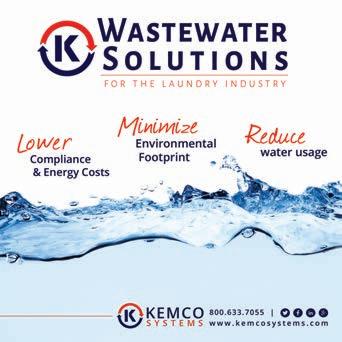
The deal arrived on the heels of TCS signing a 20-year agreement to serve the Mayo Clinic, says the Alliance.
Often acquisitions are accompanied by a turnaround in the staff; however, Superior Health Linens President and CEO Scott Reppert opted to rehire the entire team of
230 at TCS.
“When I asked the employees if they were willing to give 100%, they said no, but they were willing to give 120%,” says Reppert. “Of course, that answer was followed with applause all around. We have over 900 families counting on us for their livelihood, and we have a strong commitment to our customers as well as ensuring the future success of our team.”
The Healthcare Linen Alliance includes Ecotex Healthcare Linen
Service Corp., Emerald Textiles, Logan’s Healthcare Linen Systems, Paris Healthcare Linen Services, Superior Health Linens and Textile Care Services.
The group serves a large area covering Illinois, Indiana, Kentucky, Minnesota, New Jersey, New Mexico, New York, Ohio, Oklahoma, Oregon, Pennsylvania, Southern California, Tennessee, Texas, Washington State, West Virginia and Wisconsin, as well as Canada. ALN
Military supports relief staff in Puerto Rico through laundry
Clean clothes buoy those making a difference after Hurricane Maria
BY S GT. AVERY C UNNINGHAM
SAN JUAN, Puerto Rico — In a tumultuous environment, it is easy to forget the small things, and it is the small things that come together to improve everyday life.
“The people who are supporting Puerto Rico right now are making a difference and helping the people who really need help, and we’re supporting them so they can have clean clothes and be more comfortable,” says Sgt. Deborah Vega, 597th Quartermaster Company, 346th Transportation Battalion, 166th Regional Support Group, 1st Mission Support Command, from Puerto Rico.
Without laundry services in a tough environment, service members and other relief staff would have to wash their clothes as best they could by hand, requiring significant time and effort. Not only do the laun-

dry services improve morale by providing clean clothing, they allow relief personnel to focus on the mission at hand.
“This is our home right now, so laundry is helping us to keep on going with the missions,” says Spc. Daniel Vasquez,
480th Military Police Company, 124th Military Police Battalion, 92nd Maneuver Enhancement Brigade, Puerto Rico National Guard.
Throughout the hurricane response and recovery process relief effort, teams have
to be self-proficient to meet some of their needs. The 597th QMC provides laundry service for as many as 300 to 500 people a day. They have operated at the convention center since Sept. 23 after Hurricane Maria.
“We receive all the laundry from the people who are supporting the emergency staffs here in Puerto Rico,” says Vega. “They drop off their laundry, then we process the laundry and divide the clothes into the mesh bag by person and by load.”
Service members and emergency relief workers who come out of the field covered in sweat, dirt and grime depend on that service to maintain their personal hygiene. It improves their health and their morale. ALN
Sgt. Avery Cunningham is a member of the U.S. Army 172nd Public Affairs Detachment and the 65th Press Camp.

24 JANUARY 2018 | AMERICAN LAUNDRY NEWS www.AmericanLaundryNews.com ALN_3rd Page.indd 1 12/11/17 1:08 PM facebook/ americanlaundrynews Like our Facebook page Share our content Comment: Tell us what’s on your mind LIKE 1116aln_House Facebook jr_third.indd 1 5/3/17 2:12 PM
At left, U.S. Army Spc. Diego Laboy maintains a laundry advanced system. At right, U.S. Army Sgt. Deborah Vega records laundry details in Puerto Rico. (Photos: U.S. Army/Sgt. Avery Cunningham)
Track Career
Voltea hires new chief sales officer


FARMERS BRANCH, Texas — Voltea, a company that offers MembraneCapacitive Deionization (CapDI©), has added Dewitt Dees as chief sales officer, the company reports.



Following completion of a recent $10 million capitalization round, the company says it continues to invest in the industry’s top talent to further drive commercial growth.
“This is an exciting time of high growth for Voltea fueled by our recent launch of DiUse for point-of-use applications, and having just completed a $10 million equity raise,” says CEO Bryan Brister. “Dewitt is a great addition to the leadership team, and I am confident his extensive water industry knowledge, coupled with a proven track record of success, will further accelerate our growth.”

Well-known in the water industry, Dees brings more than 30 years of experience to Voltea, the company says. His


expertise lies in building collaborative, successful sales and marketing teams in companies such as GE, Veolia and Newalta Environmental Services. In addition, he has experience in building brand awareness and business development strategies in disruptive technology companies such as 212 Resources.
Dees holds a bachelor’s degree in science from Texas A&M University.
“I am excited to join the Voltea management team as chief sales officer,” Dees says. “This is an outstanding company with an exceptional alternative to traditional water treatment technologies. It can be difficult to differentiate yourself in this space, but I believe that Voltea has accomplished this and I look forward to working with this talented team to leverage existing successes to continue to grow this organization.”
Bates Troy promotes Moore to asst. plant mgr.
BINGHAMTON, N.Y. — Bates Troy Healthcare Linen Services, which provides laundry services to hospitals and longterm care facilities in Central New York,

has promoted Curtis Moore to assistant plant manager of the healthcare operation here, the company reports.

The company says Moore has been with Bates Troy four years, during which time he held positions of route driver and fleet manager, overseeing and streamlining the delivery operations to its customers while proving himself to be a committed company advocate.
Moore has a background in production management and brings energy and enthusiasm that will help improve customer satisfaction and motivate his team to consistently excel in their areas of responsibility, says Bates Troy. In addition, he is a Marine Corps veteran.
MIP promotes Trigiani, welcomes Pilon to staff
MONTREAL — MIP Inc., a manufacturer and supplier of reusable healthcare textiles, has promoted Michael Trigiani





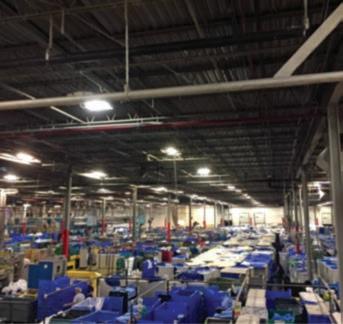

to the position of vice president, Canada business unit, the company reports. In addition, Francois Pilon has joined the corporation as senior VP of sales and marketing.
Trigiani has been with MIP for 15 years in various marketing roles with increasing levels of responsibility, most recently as the senior product manager for Canada. In the past year, he assumed additional responsibilities as the interim co-lead of the Canadian business unit where he continued building strong and collaborative relationships with customers and has now taken on the responsibility full time, the company says.
Pilon brings diverse international marketing and sales expertise, along with a mindset geared toward entrepreneurial growth.
For details about the SonicAire fan: 336.712.2437 | moreinfo@SonicAire.com Fugitive Lint Has Nowhere to Hide. Introducing the SA-S1 Fan by SonicAire: Prevents overhead lint accumulation Reduces overhead cleaning costs Greater fan velocity and reach than the original SA 1.0 Increased effective cleaning radius (by as much as +35%) ALN_Jr Half.indd 1 12/11/17 1:04 PM Buy 3 Get 1 Free!!! use promo code Laundry News Large Flux, Low Resistance, No Water-Hammer Stainless Steel Angle Seat Valves Water and Steam Available sizes 3/8” to 3” 0118aln_RW Martin.indd 1 11/27/17 9:04 AM
Trigiani
Moore
Dees
www.AmericanLaundryNews.com AMERICAN LAUNDRY NEWS | JA NU A RY 2018 25 See CAREER TRACK on Page 30
Pilon



















26 JANUARY 2018 | AMERICAN LAUNDRY NEWS www.AmericanLaundryNews.com Classified Advertising POSITIONS AVAILABLE The Griffin Group, Inc. “Recruitment Specialist” Need to FILL a position? Call Deana Griffin 888-235-2365 www.thegriffingroup.cc deana@thegriffingroup.cc ®
FOR SALE
Washex parts, on-site rebuilding, tech support.
305-827-3991 PARTS,
PARTS
stock of parts for most laundry equipment & boilers.
traps, valves and lubricants.
delivery.
parts@steineratlantic.com
EQUIPMENT FOR SALE NEW FOLDERS & SELF CONTAINED IRONERS 68” - 138” Wide WWW.JBILAUNDRYFOLDER.COM AMKO AMERICA INC. Parts, Supplies, Service Remanufactured Finishing Equipment AmkoAmerica@gmail.com 561-863-9696 DISTRIBUTOR OFFERINGS Stanco Industries, Inc. Serving The Textile Trades Since 1970 800-932-3769 k for Mike or Deb KEEPING IT GREEN SINCE 1970 EQUIPMENT FOR SALE 1-2008 Continental Compact Ironer 1-2001 Braun Folder, Model 4PF3CF/A, 4 LANE 1-2009 Braun Feeder, Model TMP3SSF with B&R Control 3-2000 Braun 500# Gas Dryers, Model 500PT-NGF 2-1997 Braun 600# Gas Dryers 1-2000-Milnor 200# split pocket W/E, Model 42044WP2 2-1999 Milnor 165# Soft Mount 1-1996 Braun 600# Open-Pocket 2004-Milnor 8 Module Tunnel, 150# Washers and Cent. Extractor 2-2005 Superior 600 Hp Boilers 2-2000 Fulton 30hp gas Boilers PERCOMAX “Direct-Contact” natural gas fired, Water Heater 1-1997 Kemco 9M btu Water Heater 2000-Leonard Steam Tunnel, Gas Fired 2-2007 Chicago Air Please visit our new website: www.stancoind.com E-mail: buyer@stancoind.com POSITIONS AVAILABLE USED CARTS WANTED Call Craig Lloyd toll free at 877.295.5693 between 9 a.m. – 9 p.m. EST. Please visit www.laundrycareers.com to review current industrial/institutional laundry management openings. ADVANCE YOUR CAREER U.N.X. INCORPORATED“ ” grow & expand U.N.X.! U.N.X. INCORPORATED DESCRIPTION FOR NEW OR USED LAUNDRY EQUIPMENT, DM IS YOUR SOURCE FOR ALL YOUR NEEDS Challenge Reconditioned Pacesetter Gas Dryers (1) Kemco (2) Stainless Steel Storage Tank 1500 gallon and Two Pass Heat Reclaimer Pik-Quik Sheet Sorter (1) Braun Return to Feed SPF Chicago Skyline 4-lane with stacker (2006) Skyline Mini (2009) with Stacker Jensen Reconditioned 2-Roll 36 Steam Ironer Chicago Edge Spreader Feeder (2001) Milnor 30022V8Z – 60lb washer (2012) Milnor 30022V6J – 60lb washer (2008) Milnor 72072 500lb Gas Pass-Through System Dryers (2006) (2) Milnor 140lb & 100lb Solid Mount Washers (2001) Unipress CSB, ABS Sleever & 3CT2 Collar Cuff Unipress CRD Rotary Double Buck For Pricing call Ron Hirsch 516.938.4300 • 516.315.7426 Hicksville, NY • www.directmachinery.com Chicago 232 Imperial 120” Gas Ironer Chicago Tristar 32 PCS 120” Steam Heated Ironer/Folder/Stacker Chicago Tristar 28 PCS 120” Gas Ironer With Spreader/Feeder Chicago Tristar 24 PCS 120” Gas Ironer Chicago “Air Express Chicago” Small Piece Folder Chicago Comet 66” Gas Ironer (Qty. 3) Chicago G024-120R Gas Ironer With Rear Return Chicago GL13-120R Gas Ironer With Rear Return Milnor 110LB Soft Mount Washer Cissell 75LB Soft Mount Washer Milnor 60LB Washer (Qty. 2) Milnor 135LB Washer (Qty. 7) Milnor/ADC 75LB Gas Dryer With Reversing Cylinder (Qty. 2) Milnor/ADC 75LB Gas Dryer With Reversing Cylinder (Qty. 5) Milnor 75LB Steam Dryer UniMac 75LB Gas Dryer View photos of entire inventory at www.washburnmachinery.com 800-245-8425 Keepin’ it clean for over 65 years! WANTED USED LINEN / LAUNDRY BULK CARTS roadrunnerwm.com/equipment | 412.430.0037 RoadRunner Recycling wants to purchase used linen/laundry bulk carts on wheels with cut out fronts. Approximate Size : L x W: 48ʺ x 28½" and Height: 66" 2003 Chicago Skyline Mini 2003 Chicago King Edge w/Vac 1993 Chicago 48” Ironer 2009 Chicago Skyline 4-Lane (2) (2006/2007) 140lb Milnor W/E 2005 130lb Milnor Conway (2) 450lb Lavatec Dryers We have a huge inventory of BRAUN PARTS - visit out parts page or call 800/925-3236 if you don’t see what you are looking for. Equipment is priced to sell! www.ineedjpequipment.com www.ineedjpequipment.com “Expect Excellence” WIRE The latest news, straight to your inbox, 2X a week THE
PARTS
WASHEX PARTS Hard-to-find
LAUNDRY PARTS CENTER 800-352-4492 Fax:
PARTS,
Huge
Also
Overnight
Steiner-Atlantic, 800-333-8883 Fax: 305-751-8390
www.steineratlantic.com
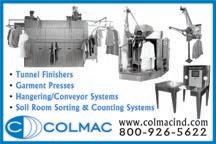











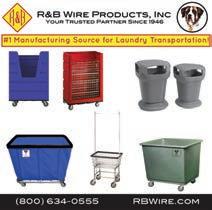
































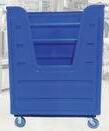
www.AmericanLaundryNews.com AMERICAN LAUNDRY NEWS | JANUARY 2018 27 Source Directory A convenient guide to sources of products and services APPAREL FINISHING CARTS, TRUCKS & BASKETS Source Directory listings in American Laundry News are sold on an annual basis at the following rates: All Major Credit Cards Accepted 2018 Listings Regular Boldface All Caps Four Line Listing per Year $900 $1,130 $1,130 Display and additional line rates available upon request CARTS, TRUCKS & BASKETS CARTS, TRUCKS & BASKETS ● Folder Stackers ● Tunnel Finishers ● Cart Washers ● Pressing Equipment ph: 704.483.9316 sales@leonardautomatics.com http://leonardautomatics.com leonardautomatics.com/t-shirt_c Free T-Shirt Financing Available Laundry/Bushel Trucks • Exchange/Flare/Security Carts • Spring Lifts Diversified Plastics, Inc. South Carolina & Georgia • 800.768.7636 sales@dpirotocarts.com • dpirotocarts.com On-Time Delivery & Quality Service! BEST LAUNDRY TRUCKS & CARTS BEST LAUNDRY TRUCKS & CARTS M c C LURE INDUSTRIES, INC. Sani-Trux is the only molded cart to pass rigorous independent laboratory testing for NFPA fire codes Made of durable fiberglass making the cart life at least twice that of a poly cart Easy to maneuver even in tight spaces Built with quality components to last years longer than other carts Visit our website for other models and avaliable options. We sell direct to all parties! M.I.T. POLY-CART 211 CENTRAL PARK WEST, NEW YORK, NY 10024 800-234-7659, FAX: 212-721-9022 WWW.MITPOLYCART.COM l-800-275-2436 l-800-275-2436 maxi-movers.com Email:sales@maxi-movers.com TURNABOUT TRUCKS ® Simply reposition the shelves to quickly convert a clean linen shelved delivery truck to a soiled linen bulk transport. Available in 18 attractive colors, up to 48 cu. ft. capacities. Powder coated welded steel bases. M8592 M9091 Chm #9792 ALN Turnabout Trks'16:Layout 1 6/1/16 2 Our sturdy workhorse holds more laundry on the same, classic footprint and fits neatly into your cart fleet. Optional, lockable, waterproof lid and door. Call now for free quote. DEPENDABLE We Put More Into Our Carts So You Can, Too! Call 800.829.4535|questions@MODROTO.com | MODRoto.com 72P americanlaundrynews www. .com LITE LAUNDRY TRUCKS 800.304.4600 www.FIBERTECHINC.net We Create Environmentally Responsible Solutions • SAME DURABILITY • SAME CAPACITY • SAME PERFORMANCE BETTER PRICE


































28 JANUARY 2018 | AMERICAN LAUNDRY NEWS www.AmericanLaundryNews.com Source Directory A convenient guide to sources of products and services FLATWORK IRONERS Knowhow In Action Your Tingue rep is a fully trained master of finishing equipment operation, maintenance and installation. Call for: • Pads, covers, belts, waxes, tapes and more • Carts, trucks, baskets and bags • Parts, rebuilds and repairs 800.829.3864 www.Tingue.com MODRoto.com TBR-Associates.com C & W EQUIPMENT (800) 443-3573 FLATWORK IRONER SPECIALISTS REMANUFACTURED IRONERS: Super Sylon Sylon Hypro’s Super Pro Jensen SS700 SS800 Ultima Lavatec UPGRADE KITS: Chain Drive Conversion Vacuum Systems Herringbone Conversion Canopies Inverters Side Covers Roll Springs Jensen Drives SUPPLIES: Aprons Pads Covers Belts Waxes Cleaners PARTS/REPAIRS: All Brands New/Refurbished/Hard to Find COMMITTED TO EXCELLENCE Pellerin Milnor Corp. P.O. Box 400, Kenner, LA 70063 504-467-9591, Fax: 504-468-3094 www.milnor.com DRYERS – 100 POUNDS OR MORE Pellerin Milnor Corp. P.O. Box 400, Kenner, LA 70063 504-467-9591, Fax: 504-468-3094 www.milnor.com CLEAN CYCLE SYSTEMS 960 Crossroads Blvd., Seguin, TX, 78155 800-826-1245 • CCsystems@tqind.com www.cleancyclesystems.com DRYERS – 100 POUNDS OR LESS LINT COLLECTORS & FILTERS MAT ROLLERS DRYER BOOSTER & EXHAUST FANS www.energenics.com ENERGENICS CORPORATION TALK TO OUR DESIGN AND ENGINEERING STAFF ABOUT YOUR NEEDS 1470 Don St. • Naples, FL 34104 • 800-944-1711 ›› Our In-Line Lint Filter mounts inside, saves space! ›› OPL Duct Mounted Lint Filters 1,000 to 2,700 CFM ›› Fiberglass or Stainless Steel Dry Filters ›› Hundreds Sold Annually Source Directory listings in American Laundry News are sold on an annual basis at the following rates: All Major Credit Cards Accepted 2018 Listings Regular Boldface All Caps Four Line Listing per Year $900 $1,130 $1,130 Display and additional line rates available upon request HEALTH CARE LINEN TRANSPORT CARTS “In-House” or “Over-The-Road Transport” Ergonomic Aluminum - Tough Fiberglass – Ultimate Stainless ALL SIZES & CUSTOM C APABILITIES 800-826-1245 | www.tqind.com | TQcarts@TQind.com America’s #1 Trusted Source Since 1961! HEALTHCARE LINEN TRANSPORTS CART-WASHING SYSTEMS www.energenics.com ENERGENICS KARTWASHERS FULLY AUTOMATIC KARTWASHER PREMIER W/TOUCHPAD 1470 Don St. • Naples, FL 34104 • 800-944-1711 Designed to wash and sanitize all popular laundry carts • Automatic two minute cycle • Dries and sanitizes • Minimum water useage Concentrates wash effectiveness on the cart interior Fast automatic washing, sanitizing and drying insure optimum cleaning • 15 second detergent wash and sanitizing rinse cycle • Adjustable automotive car wash style drying 1116aln_Energenics Cart Washers SD.indd 1 9/27/16 3:30 PM What Every Laundry Needs In A Cart Washer: M c C LURE INDUSTRIES, INC email: kim@mcclureindustries.com 800-752-2821 • www.mcclureindustries.com A cart washer that works continuously for 15-20 years. The ability to install your cart washer in a cross-contamination barrier wall. A cart washer that really, truly cleans each cart of bio-contaminents inside and out. One that uses existing utilities no remodel costs. Time selectable efficient cycles that use a minimum amount of water. FEEDER AND FOLDER BELTS www.superiorbands.com 1-800-227-2906 Sales@superiorbands.com Feeder/Folder Belts Superior Bands, Inc. Buy Direct OPL-Series DLF-500 Lint Lasso 1,000-10,000 CFM Established: 1991 4,000-35,000 CFM Established: 1985 4” to 18” Duct Established: 2011 www.cleancyclesystems.com • 800 992 0697 MICROFIBER Durable Micro ber Cloths www.texasmicro ber.com 214-810-9563/800-742-2913
Pellerin Milnor Corp.
P.O. Box 400, Kenner, LA 70063 504-467-9591, Fax: 504-468-3094 www.milnor.com
SMALL-PIECE FOLDERS

Pellerin Milnor Corp.
P.O. Box 400, Kenner, LA 70063 504-467-9591, Fax: 504-468-3094 www.milnor.com
WASHERS – CONTINUOUS BATCH WASHER-EXTRACTOR





Pellerin Milnor Corp.
P.O. Box 400, Kenner, LA 70063
504-467-9591, Fax: 504-468-3094 www.milnor.com


Pellerin Milnor Corp.




P.O. Box 400, Kenner, LA 70063 504-467-9591, Fax: 504-468-3094 www.milnor.com


www.AmericanLaundryNews.com AMERICAN LAUNDRY NEWS | JANUARY 2018 29 Source Directory A convenient guide to sources of products and services PARTS PARTS & SUPPLIES • Door Handles • Door Locks • Print Boards • Bearing Kits • Drain Valves • Shocks • Heating Elements • Inlet Valves and more! QUALITY LAUNDRY PARTS, GREAT PRICES For questions and custom orders email info@FrontecStore.com (941)726-0808 Handles • Drain Valves • Shocks • Heating Elements • Inlet Valves and more! questions and custom ordersFrontecStore.com (941)726-0808 CINCINNATI LAUNDRY EQUIPMENT We stock all the parts you need! We have something for everybody! Parts for All Major Manufacturers 2648 Spring Grove Avenue Cincinnati, OH 45214 Phone: 513-542-5000 • Fax: 513-542-5022 www.cincinnatilaundry.com cle@cincinnatilaundry.com Your #1 AJAX Source! AJAX • CISSELL LAVATEC • ALLIANCE IPSO • HUEBSCH JENSEN HYPRO/SUPER SYLON HOFFMAN • VOSS PERMAC
– 100
– 100
POUNDS OR LESS WASHER-EXTRACTOR
POUNDS OR MORE
– EXTRACTION
MATERIAL HANDLING / CONVEYORS Source Directory listings in American Laundry News are sold on an annual basis at the following rates: All Major Credit Cards Accepted 2018 Listings Regular Boldface All Caps Four Line Listing per Year $900 $1,130 $1,130 Display and additional line rates available upon request Company Page Company Page INDEX OF ADVERTISERS A.L. Wilson Chemical Co. .............................................................................................................................................9 ADI American Dawn ...............................................................................................................................................5, 17 Association for Linen Management ......................................................................................................................... 20 Consolidated Laundry Machinery 19 Direct Machinery Sales Corp. ...................................................................................................................................26 Energenics Corp. .........................................................................................................................................................23 Girbau Industrial.............................................................................................................................................................7 The Griffin Group Inc. ................................................................................................................................................26 J.P. Equipment ............................................................................................................................................................26 Kannegiesser ETECH ..................................................................................................................................................21 Kemco Systems Inc....................................................................................................................................................24 LaundryCareers.com .................................................................................................................................................26 Lavatec Laundry Technology ..................................................................................................................................32 Norchem Corp. ............................................................................................................................................................13 Pellerin Milnor 3, 15 R.W. Martin & Sons ....................................................................................................................................................25 Roadrunner...................................................................................................................................................................26 SonicAire .......................................................................................................................................................................25 Stanco Industries ........................................................................................................................................................26 Venus Group.................................................................................................................................................................31 Washburn Machinery Inc. 26
PRESSES
Gardner Machinery Corporation P.O. Box 33818, Charlotte, NC 28233 Ph.: (704)372-3890; Fax: (704)342-0758 www.gardnermachinery.com
Fujitsu, Positek partner to grow RFID market in North America

FOOTHILL RANCH, Calif. — Fujitsu Frontech North America Inc. has partnered with Positek RFID LP to form a new subsidiary company, Positek RFID Inc., with the objective to expand the market for washable RFID technologies in North America, the company reports.
Positek RFID LP creates and installs custom-designed laundry management solutions that enable companies to improve productivity by reducing labor and merchandise costs and accurately tracking, sorting and managing inventory.
Fujitsu says Jeff Markman will continue his leadership role as president of the new company, reporting to the board of directors. Herb Markman will also be actively involved with Positek RFID Inc. and assume the position of chief technology officer.
“Our business relationship with Positek through the years has been very successful. By creating this new company, we will enable Positek to achieve even greater strength and market success as industry moves towards digital transformation,” says Michi Sugawara, president and CEO of Fujitsu Frontech North America. “Positek RFID Inc. will continue to be operated as an independent business with a long-term goal of expanding its presence in the North American market.”
“We are excited to form a closer working relationship with Fujitsu,” says Herb Markman. “Fujitsu is a forward-looking company with exceptional product development. We are confident that this relationship will allow us to become even more agile and grow our market while giving our customers confidence in our long-term success.”
Fujitsu Frontech North America Inc. provides marketfocused IT solutions that enable customers to achieve business objectives through integrated offerings for self-checkout and currency management solutions, kiosks, mobile, RFID, and biometric authentication technology.
VPP Star is OSHA’s highest recognition for the practice of and commitment to exemplary occupational safety and health. Voluntary Protection Program Star certification is earned by businesses that meet very rigorous safety requirements and can prove that the elimination of injuries is a key component of a company’s culture.
“Going through the VPP process helped each of our employee-partners look at safety in a unique way,” says Micha Crist, service manager for Cintas in Pasco. “We now realize that safety is a topic that must be talked about daily and can be applied in nearly any situation.”
Approximately 21 employee-partners are employed at the uniform facility in Pasco. The location officially began the VPP process in 2016.
Since 2011, a total of 67 Cintas facilities have been recognized under the VPP program, according to the company. Cintas is currently ranked second in the entire nation for companies with VPP sites.
Cintas Corp. says it has approximately 250 facilities throughout the world actively pursuing VPP recognition by OSHA or the equivalent under a similar certifying body. This includes operations in the United States, Canada, the United Kingdom, Mexico and Honduras.
Gulf States Laundry Machinery Co. wins Huebsch regional award
RIPON, Wis. — Gulf States Laundry Machinery Co. was recently recognized by equipment manufacturer Huebsch for top sales achievement over the prior year in the Southern Region, the company says.
The Houston office grew sales 21% over prior year, while maintaining a dominant presence in its territory.
“Gulf States continues to be a shining star for Huebsch,” says Kathryn Rowen, North American sales manager for Huebsch. “The whole organization exudes a passion to serve customers at the highest level. They truly are leaders in their market.”
Huebsch honored several distinguished distributors at a ceremony held recently at the Foundation Room inside the House of Blues at Mandalay Bay Hotel in Las Vegas.
represent the brand in our markets.”
Pravin Parmar says that Gulf States identifies fully with the reputation Huebsch has created with its exceptional distributors.
“Our aim as a company has always been to be the best laundry equipment distributor in our area, and our success is linked directly to the loyalty of our customers,” he says.
Standard Party Rentals partners with La Tavola Fine Linen Rental
SAN FRANCISCO — Standard Party Rentals, headquartered in Richmond, Calif., has formed a brand partnership with Napa-based La Tavola Fine Linen Rental, a luxury linen provider, the companies report.
The partnership will begin in the Central Valley, Calif., Standard Party Rentals location, where all linen rentals will be offered exclusively by La Tavola Fine Linen Rental.
“This collaboration between our brands in the Central Valley is the first phase of a broader plan which will allow us to maximize resources and provide a one-stop shop for our client base in the Northern California market,” says Matt Guelfi, president and owner of Standard Party Rentals.
The joint collaboration will be branded as La Tavola for Standard Party Rentals.
“We are pleased to be the sole linen provider for the Standard Party Rentals’ Central Valley location,” says Jeff Black, CEO of La Tavola Fine Linen Rental. “This partnership enables both of our brands to achieve a shared vision in elevating the client experience through more choices, both in service and products.”
Standard Party Rentals says it recently acquired the Central Valley Classic Party Rentals facility and has a newly opened design showroom in Midtown Sacramento, where they are neighbors with La Tavola Fine Linen Rental.
PASCO, Wash. — Cintas Corp.’s rental location here has received Voluntary Protection Program (VPP) Star certification from the Washington State Occupational Safety and Health Administration (OSHA), the company reports.
Started in 1984 by owners Harish and Pravin Parmar, Gulf States Laundry Machinery Co. is one of the largest distributors of on-premises, drycleaning and vended laundry equipment in the United States, says Huebsch. The company also has an office in Atlanta.
“Gulf States and Huebsch has been a great partnership through the years,” Harish Parmar says. “We are proud to
Career
He comes to MIP from Montreal-based Pharmascience, where he was the head of international affiliates. He has lived in various parts of Canada, the United States and Germany.
His career path includes a BSC in biochemistry at McGill (where he also played university hockey) and an MBA from Wales University. With his confident, articulate and energetic personality, the company says it is confident he will contribute to MIP’s mission and vision.
Fourth generation of family leadership at Penn Emblem
PHILADELPHIA — Familyowned and -operated business Penn Emblem Co. has welcomed Tyler Joseph to the team, the company reports. Bringing the company into its fourth generation, Joseph will be training in all areas of Penn Emblem to become familiar with all aspects of the business.

A graduate of Penn State University, Joseph’s primary
Standard Party Rentals has been family-owned and -operated since 1984. It operates multiple locations within Northern California, including San Francisco, the Central Valley, Sacramento and the South Bay. The company says it carries a wide variety of products, including dinnerware, flatware, glassware, tables and chairs, furniture, tenting, and flooring.
La Tavola Fine Linen Rental says it has been a premier linen rental provider since 2008. Growing from one showroom in California to numerous locations from San Francisco to Dallas, with the newest location in Maui, La Tavola currently ships its extensive linen selection nationwide. ALN
Track
experience is in advertising, media and digital marketing communication, according to the company. He has worked at Penn Emblem as an intern during high school and during college breaks.
After graduating college, the company says Joseph moved to New York City, where he gained experience outside of the company. He worked at large media
agencies such as Mediavest and The Omnicom Group, global media, advertising and communication firms. Joseph says he looks forward to bringing a different angle to the company, utilizing his experience from these previous positions.
“I am committed to the challenge of a changing industry
and look forward to working together as a member of the Penn Emblem Co. team,” Joseph says. “In my world, speed of delivery and commitment to serving the customer is crucial to the success of our business. I am excited to be a part of Penn Emblem Co.’s future.
“I visualize our business moving into robotics, automation and bringing sustainable and smart fabrics to our customers. Change is important to me, and will be used to fit the customer’s ever-evolving needs.”
30 JANUARY 2018 | AMERICAN LAUNDRY NEWS www.AmericanLaundryNews.com
ALN
Joseph
OSHA recognizes Cintas Washington location with highest safety designation
Continued from Page 25

www.VenusGroup.com 800-421-6599 Your customers
your
your restaurant being environmentally-friendly
better experience.
Available in
and
Our products are
the
Call us for more information and samples
Reliable. FARM 2 FINISH® ®
notice how
tables are set and associate cloth napkins with
and o ering a
7 out of 10 customers say table linens create a better experience through improved atmosphere, cleaner appearance and reduced noise levels. Our Signature® table linens by Milliken ® are designed with special technology to protect against the toughest soil, odor and bacteria. Constructed for durability and long life to keep that “like new” look wash after wash.
white
35 standard colors to match your decor.
proudly made in
USA.
Resilient. Resistant.





































































































































































































































































































































